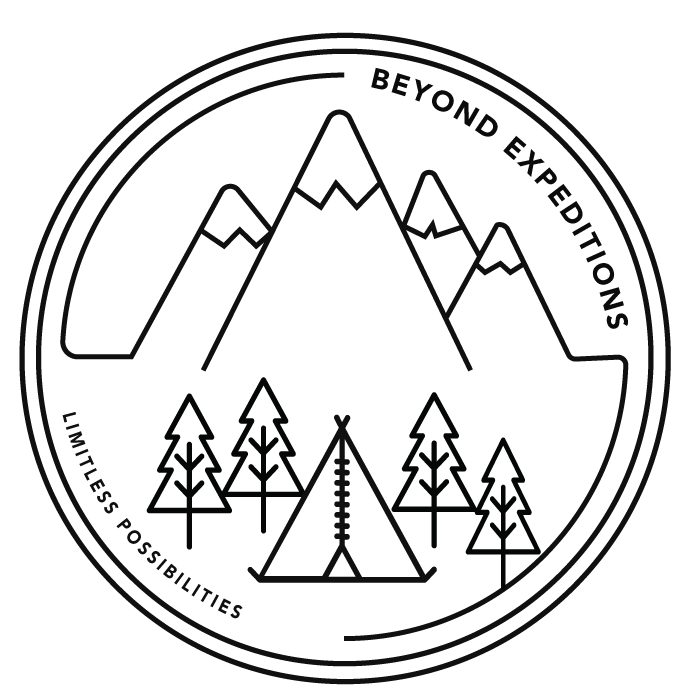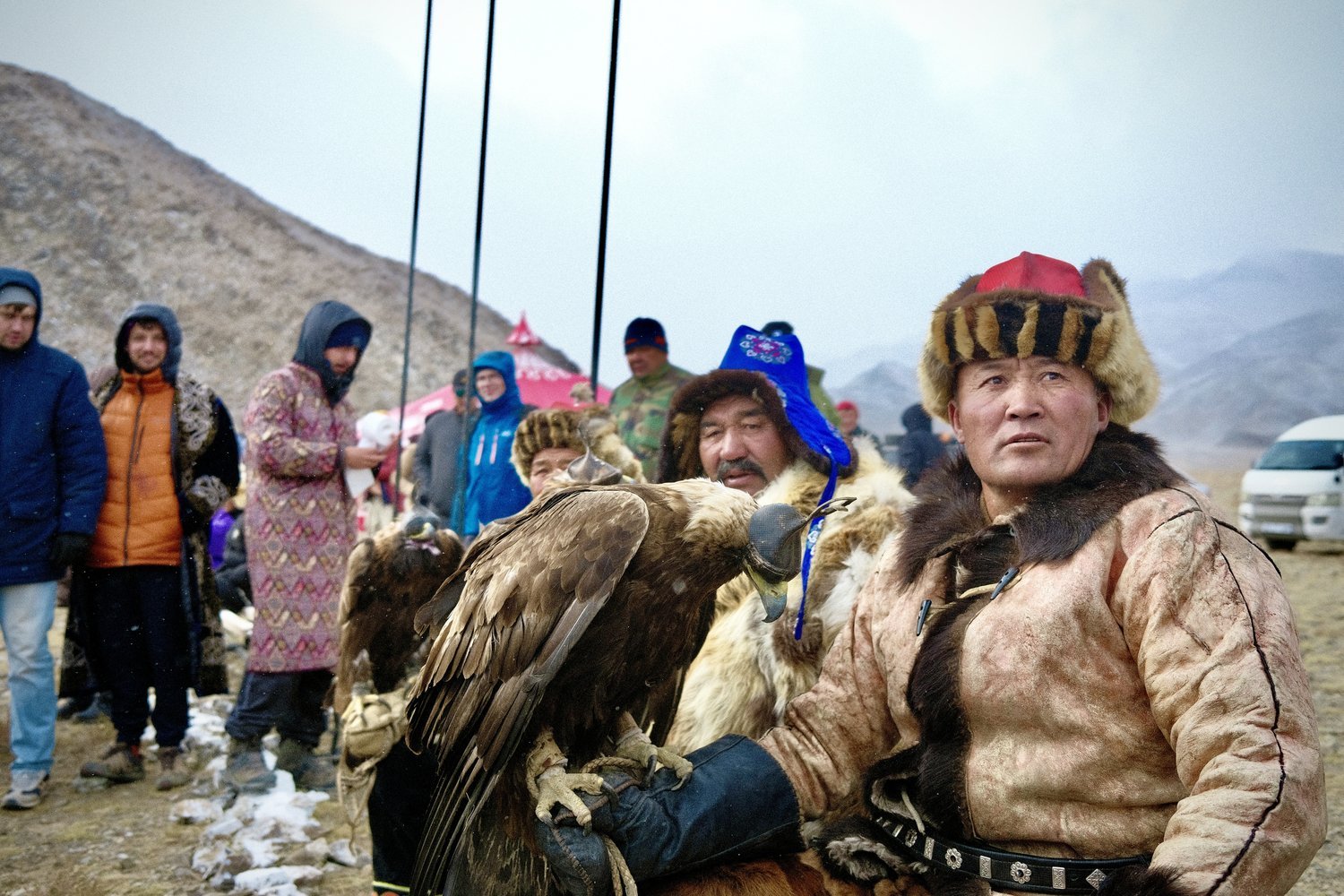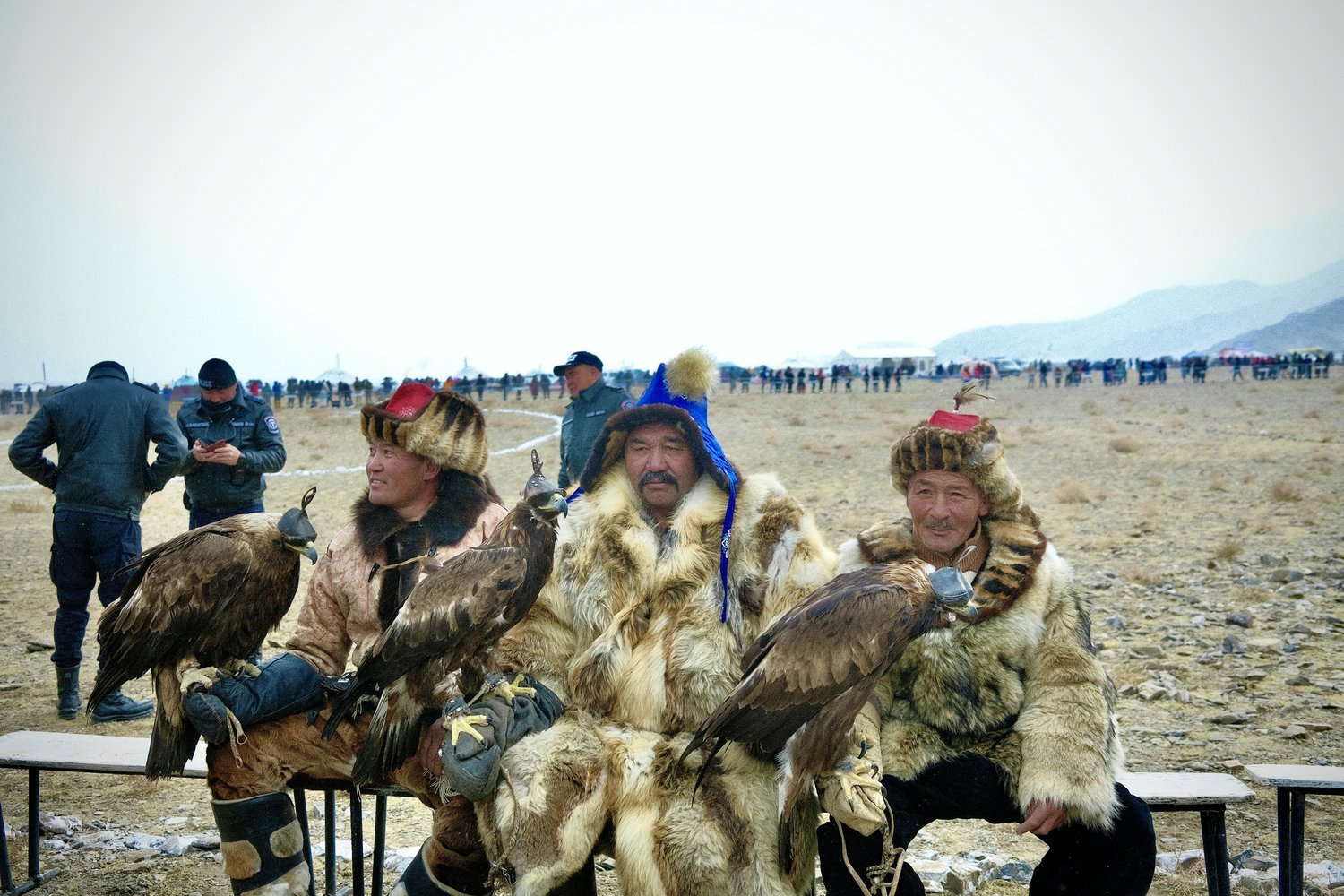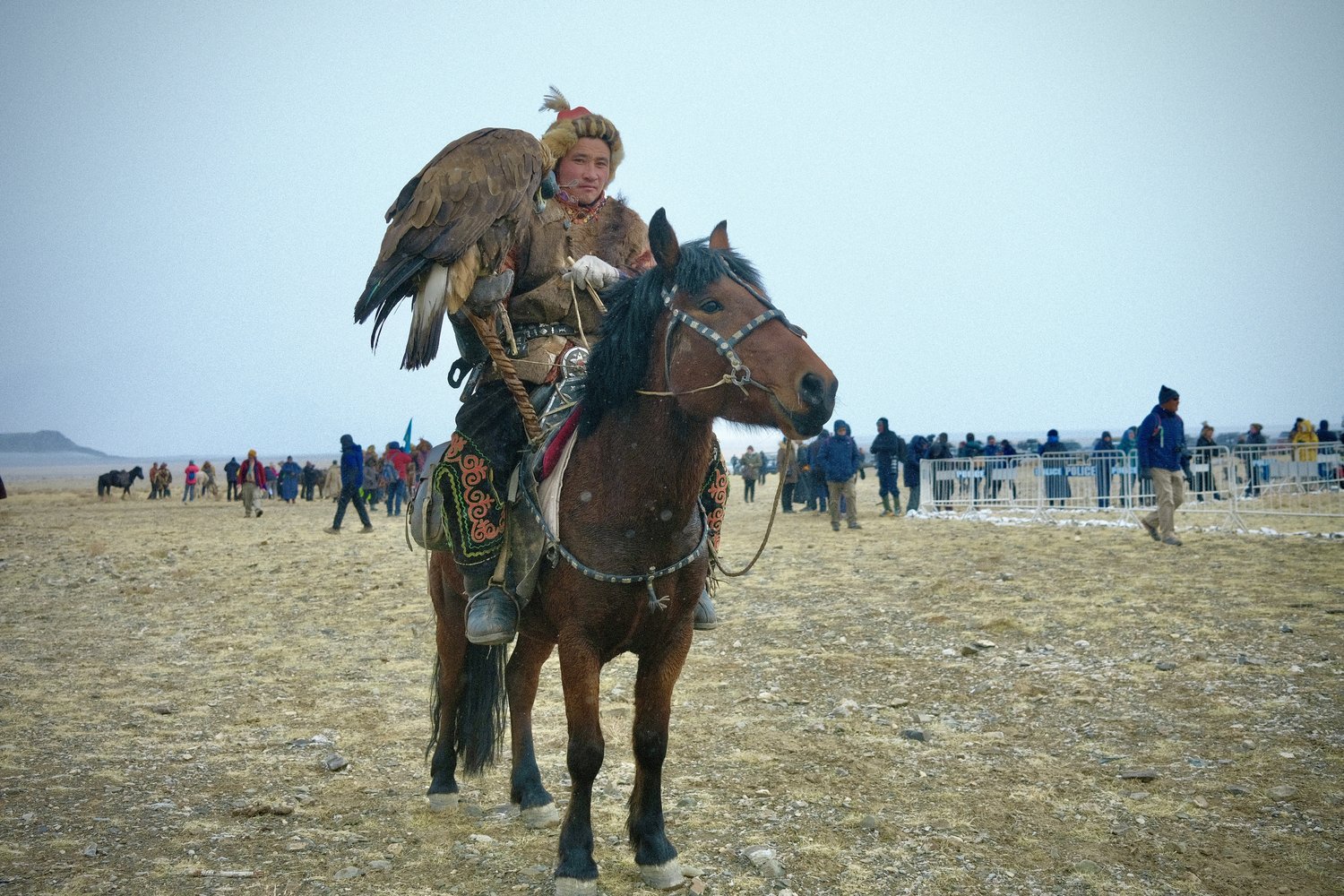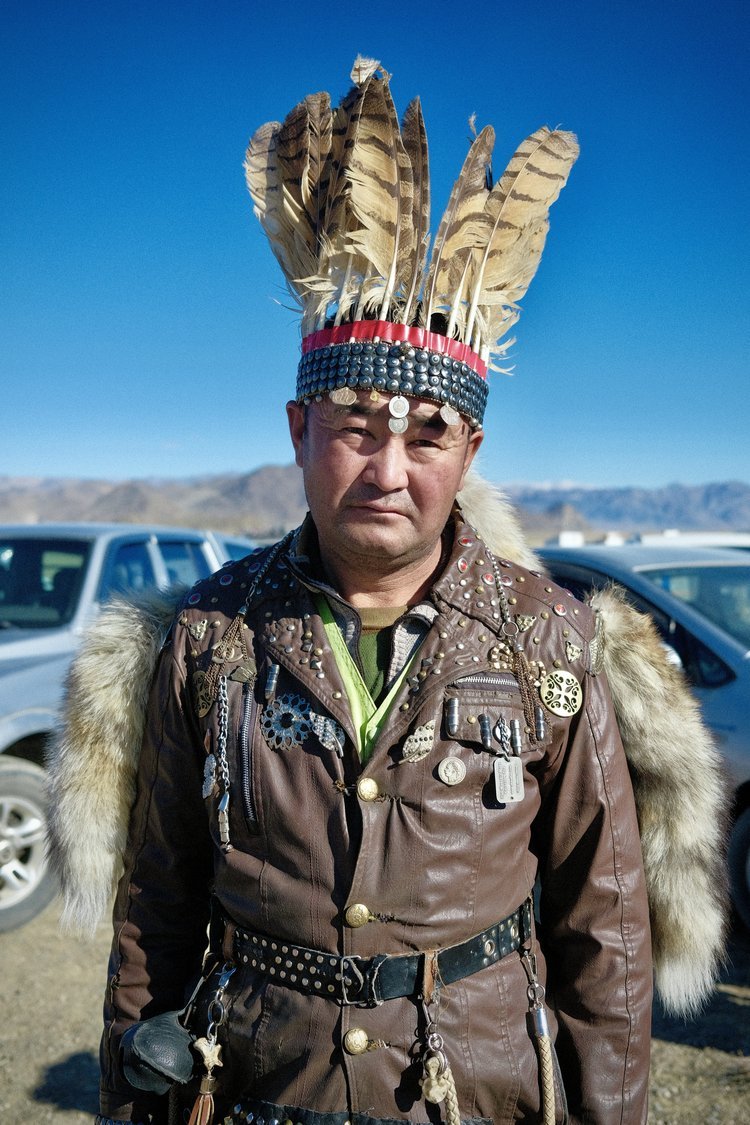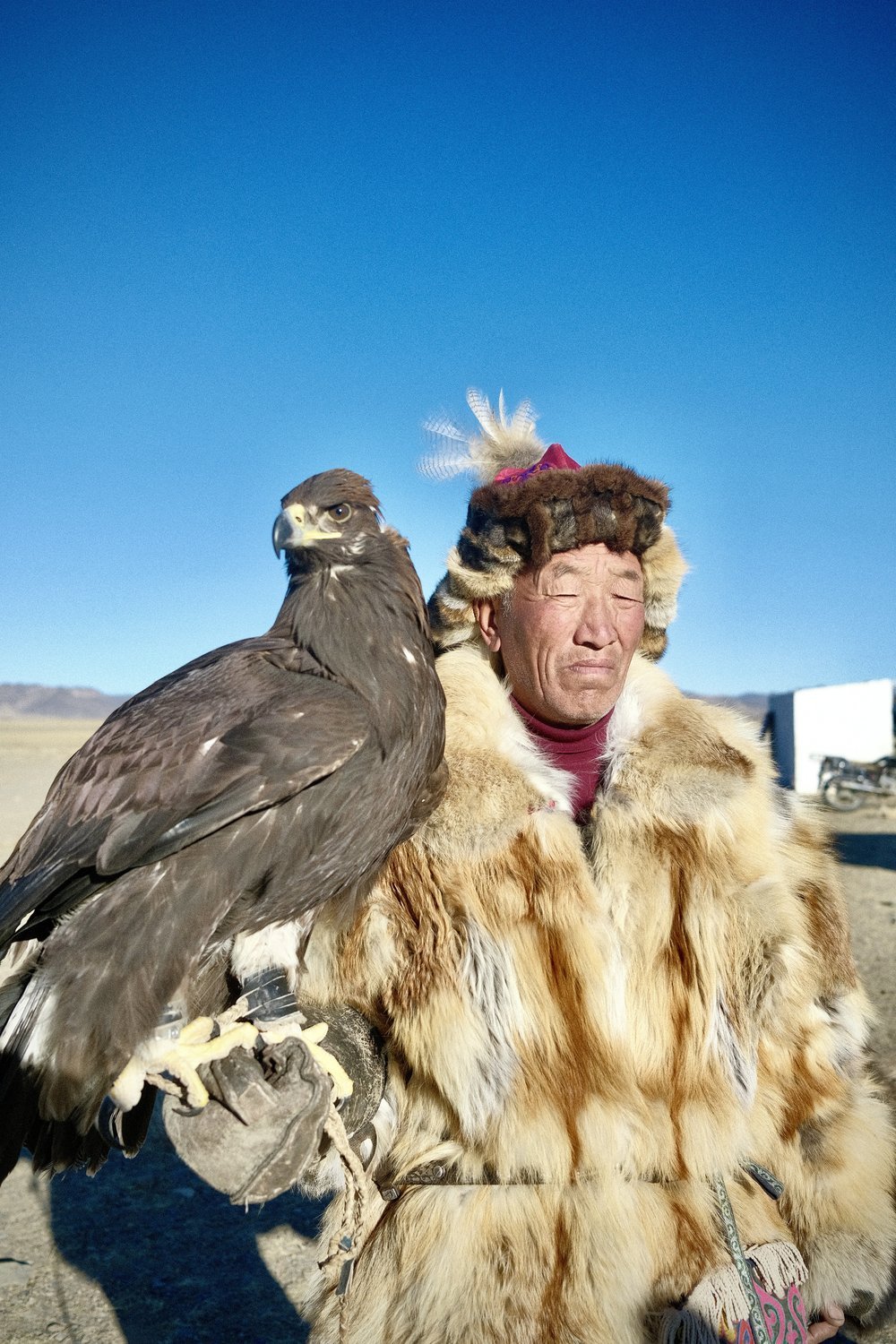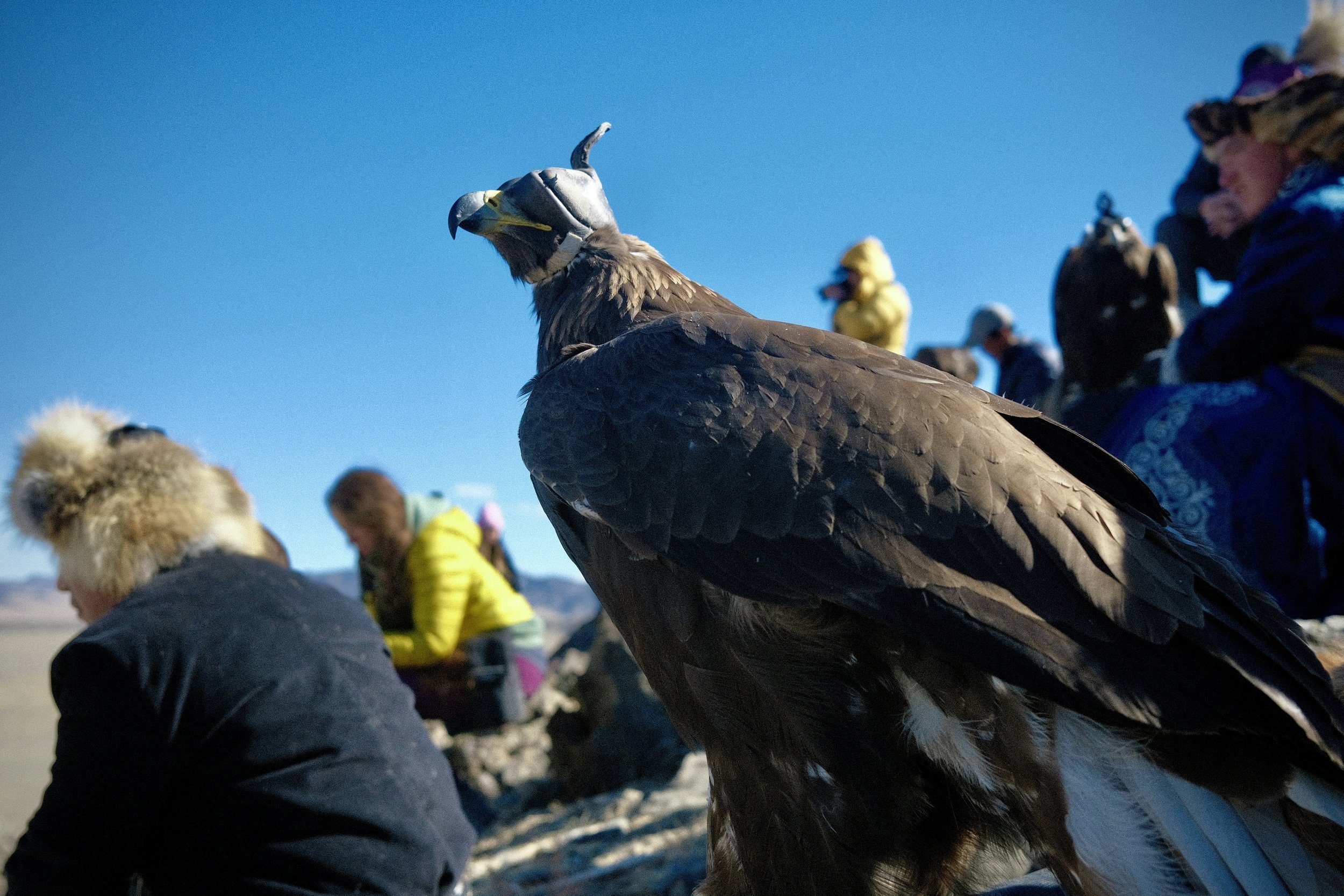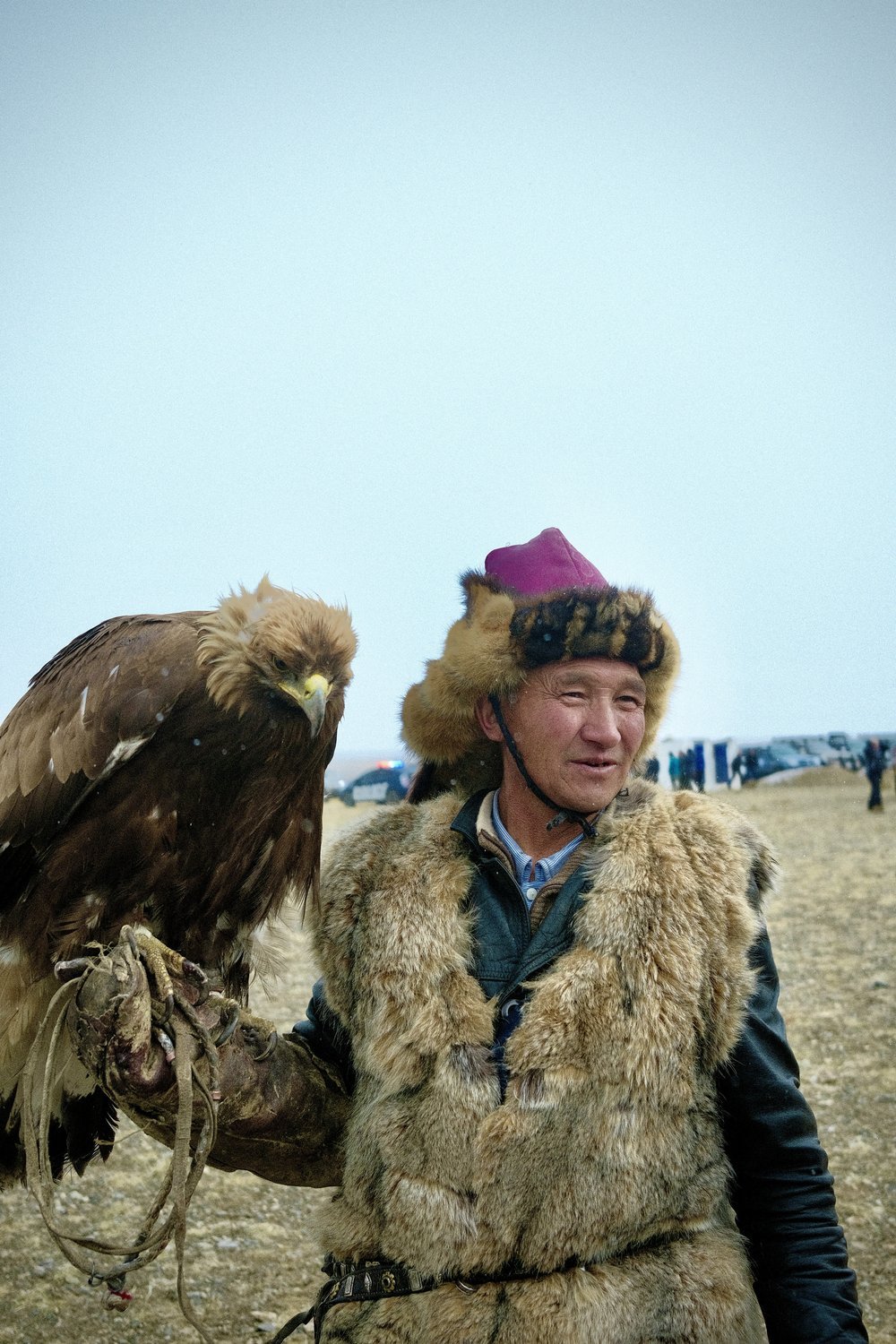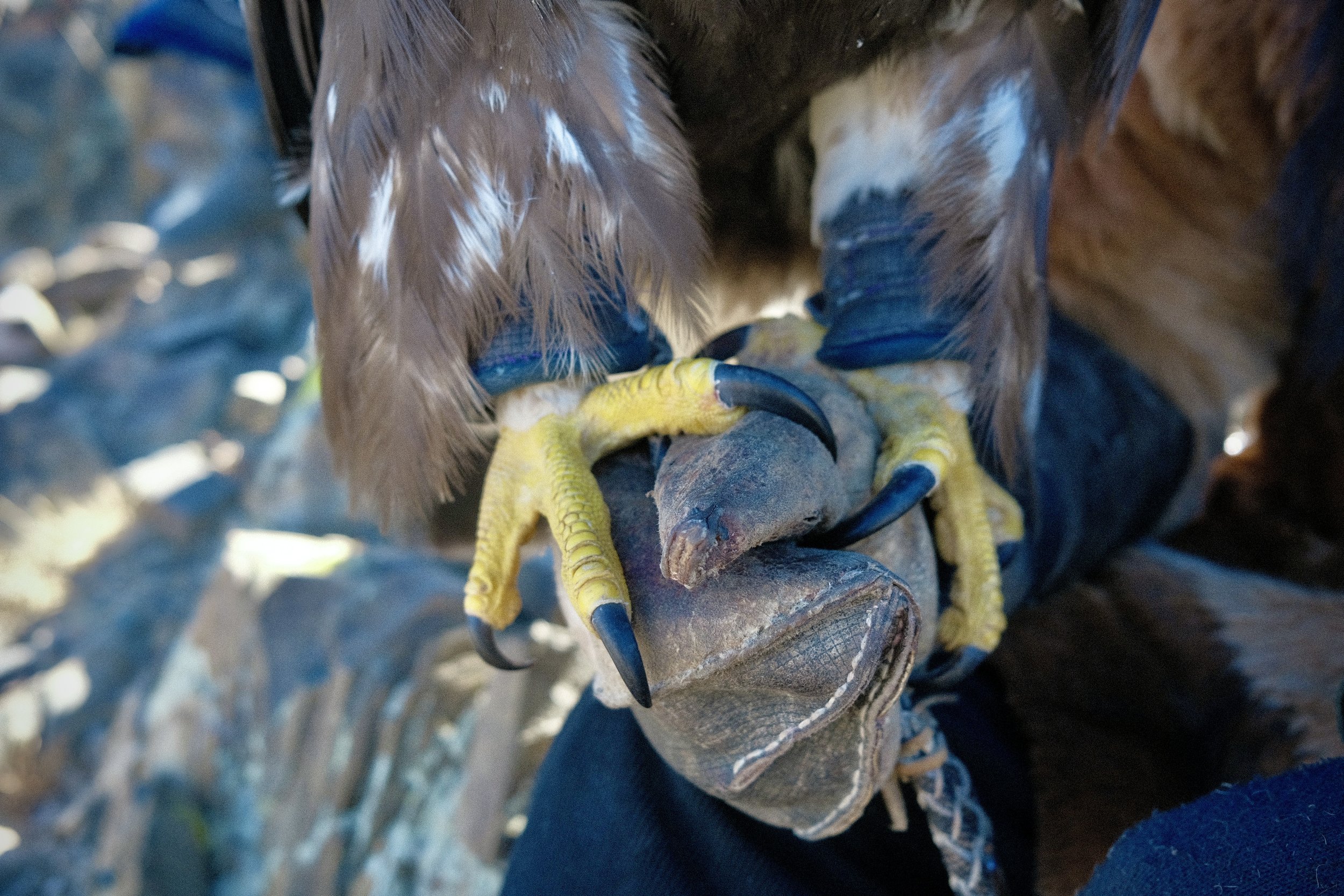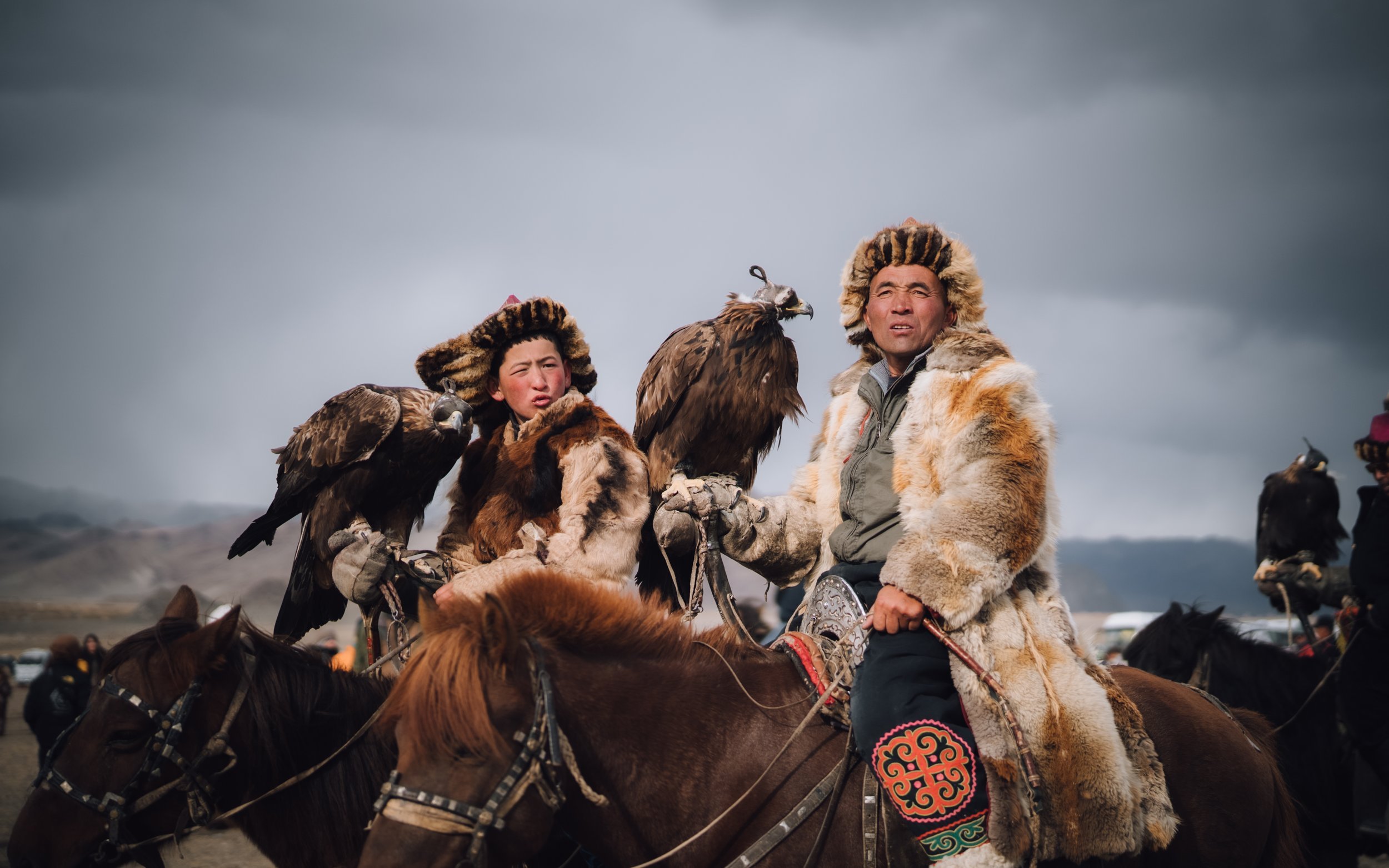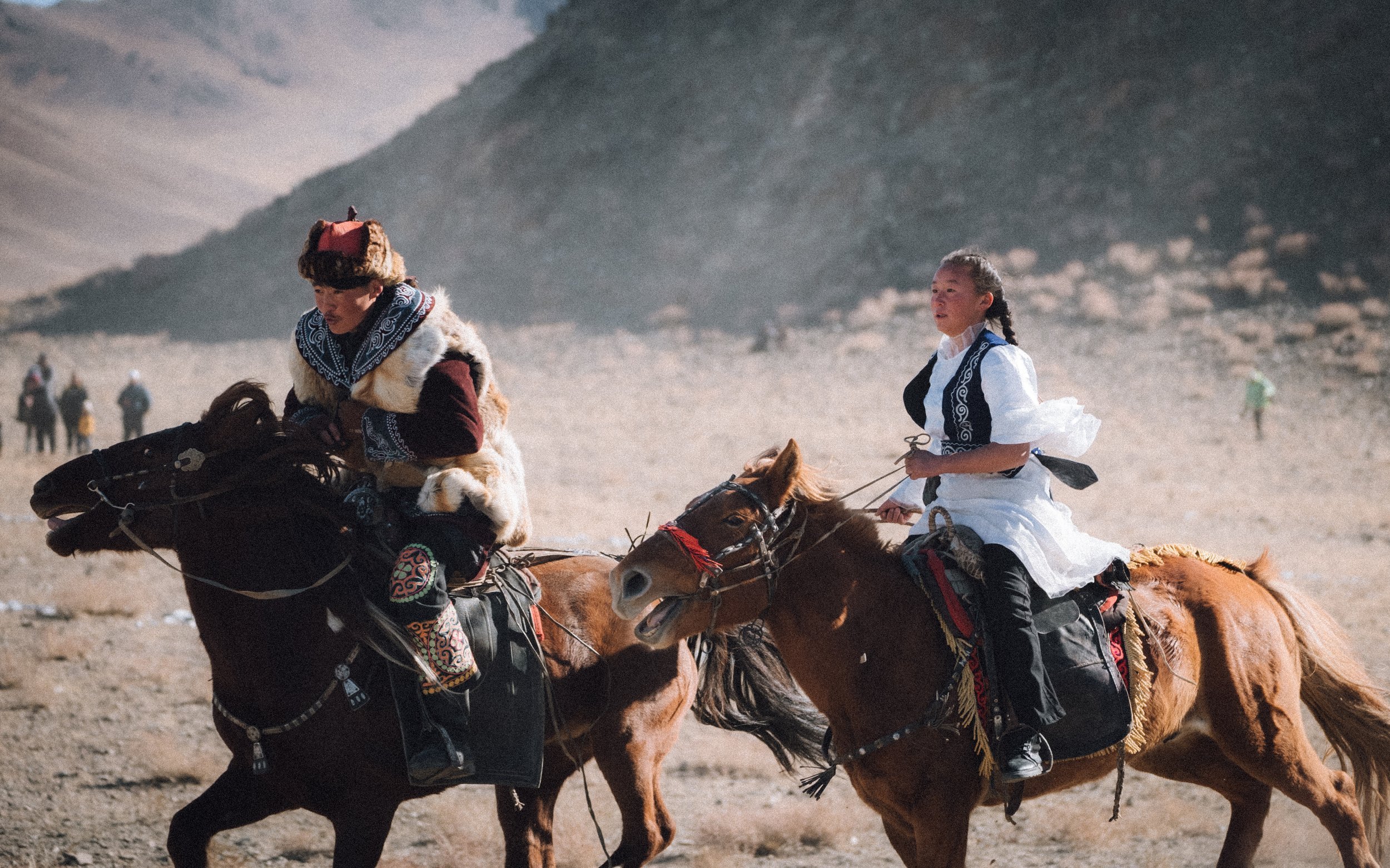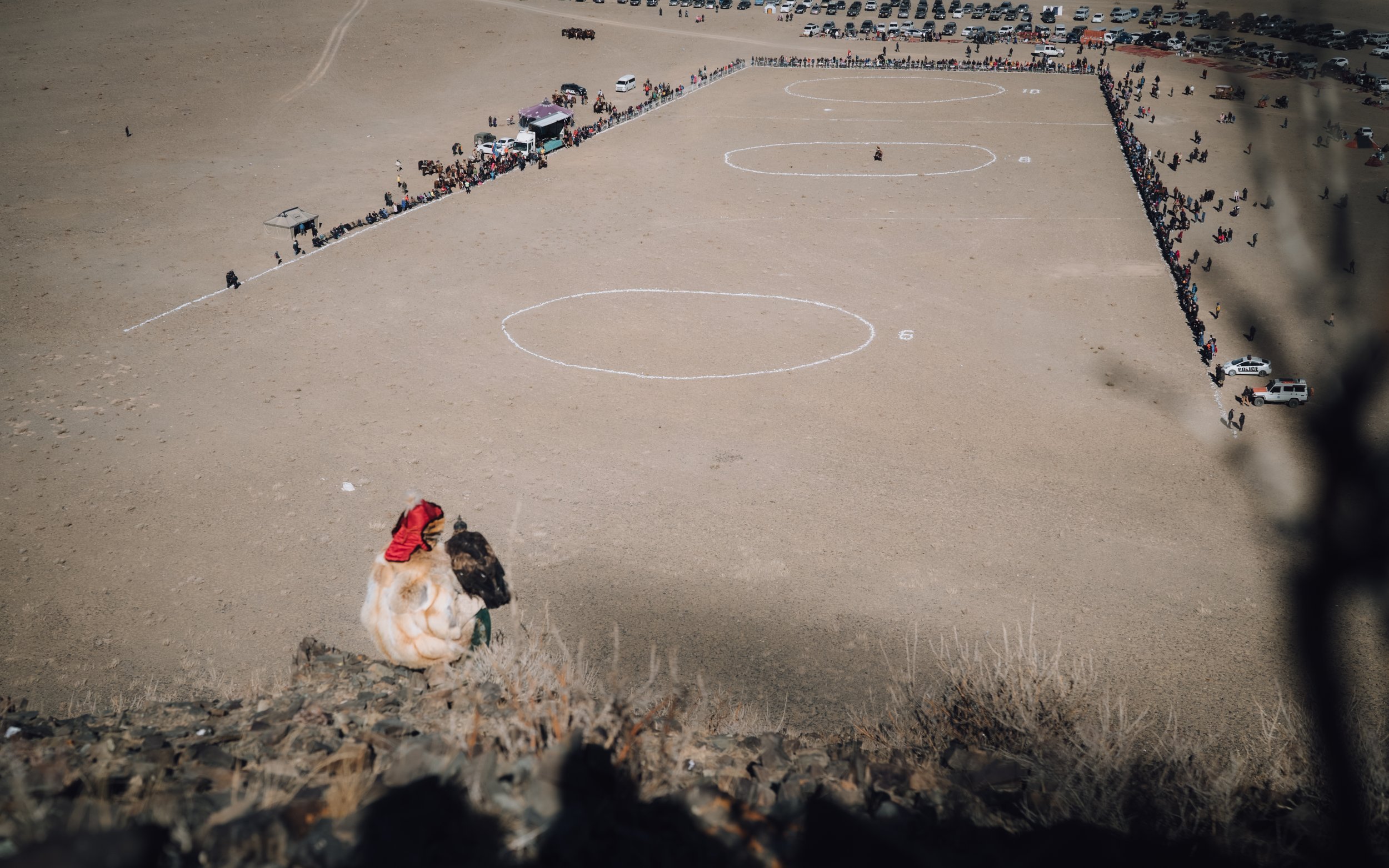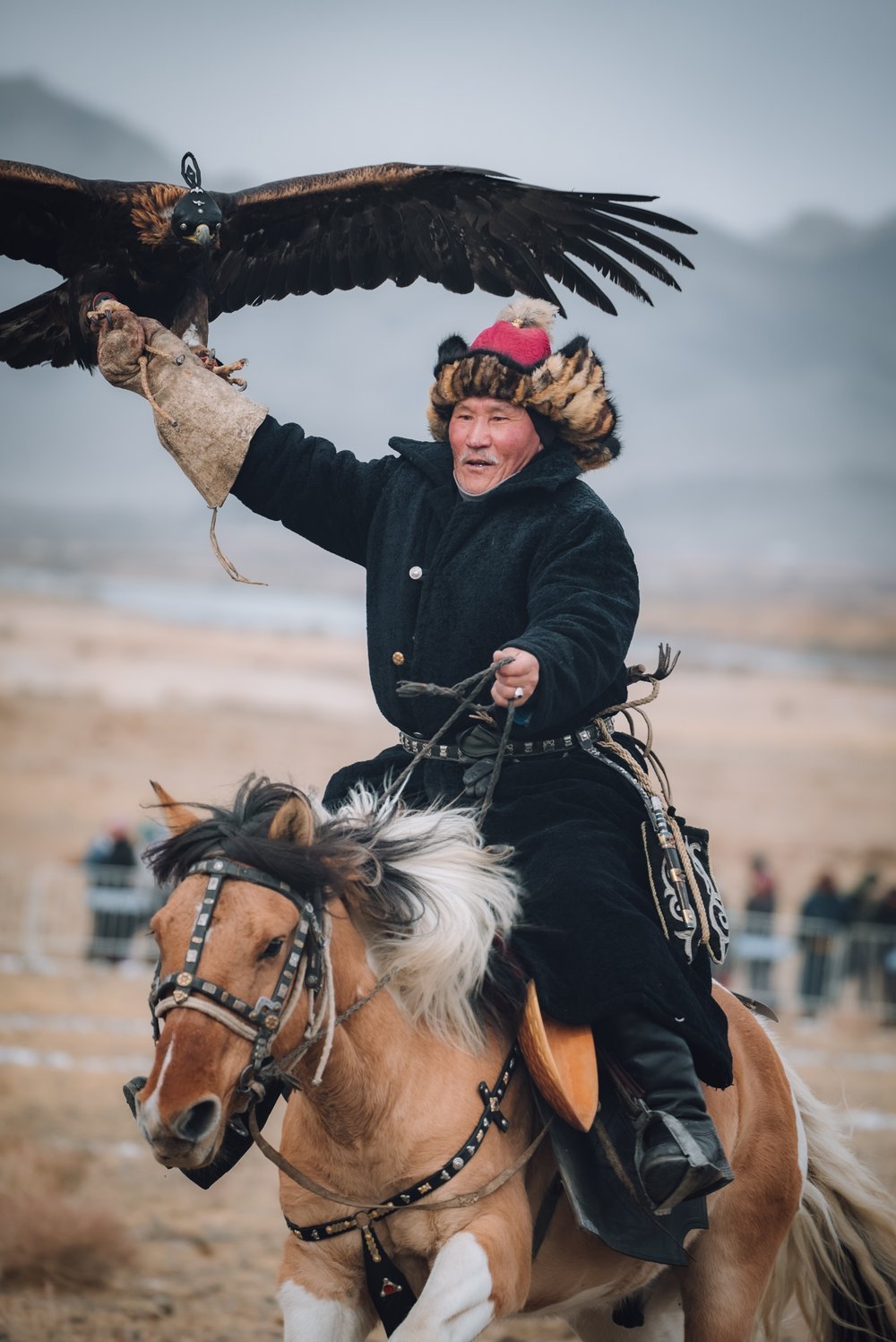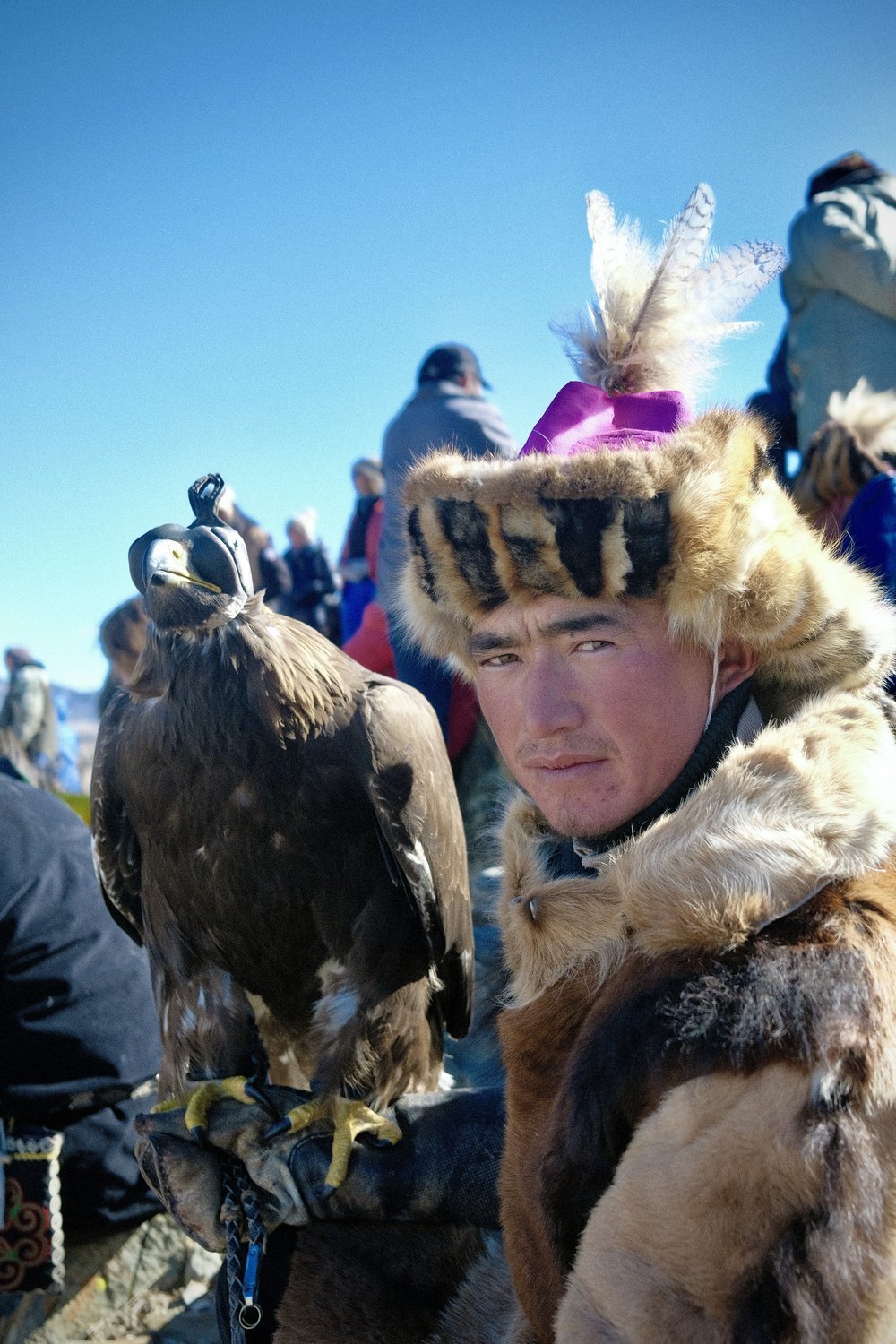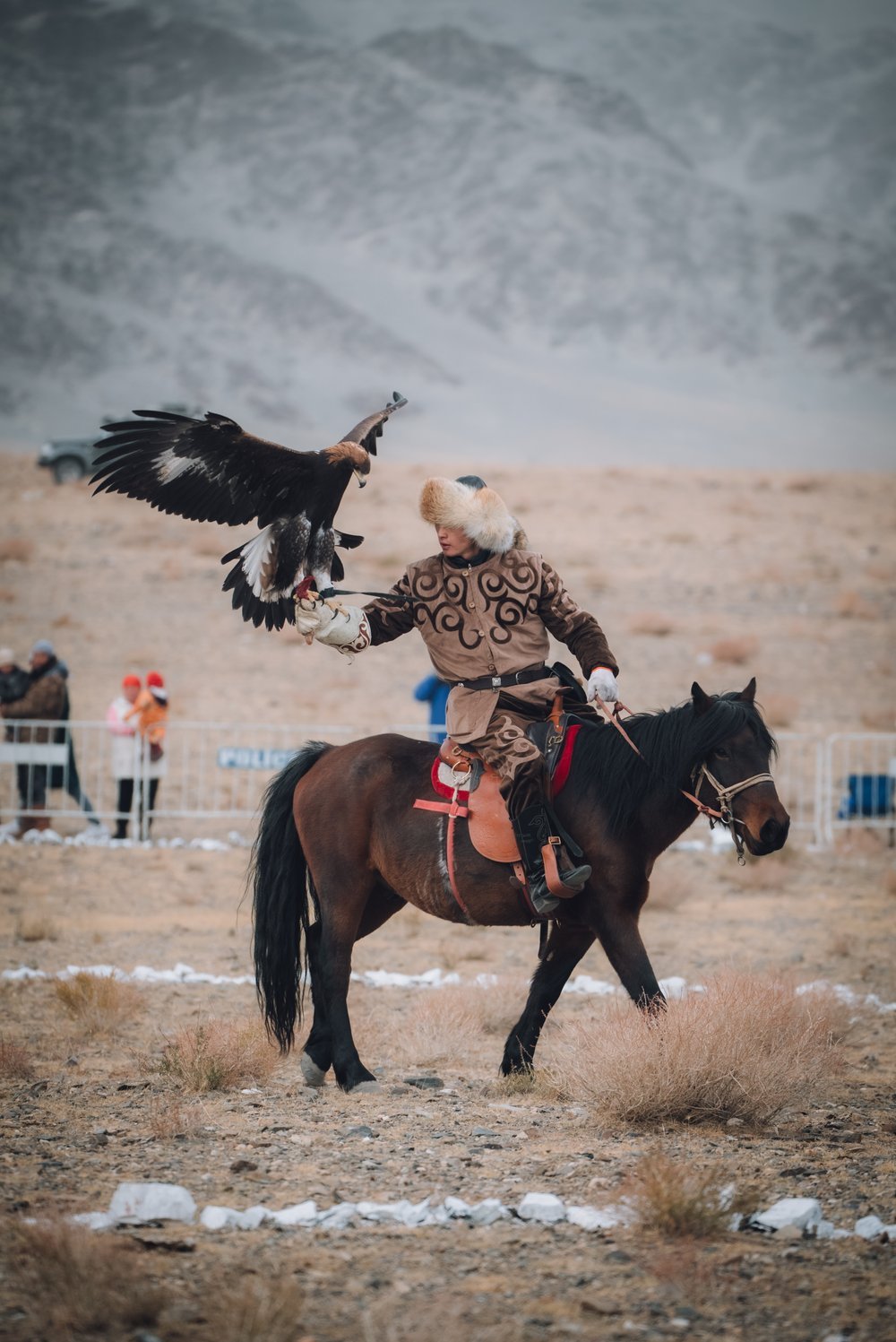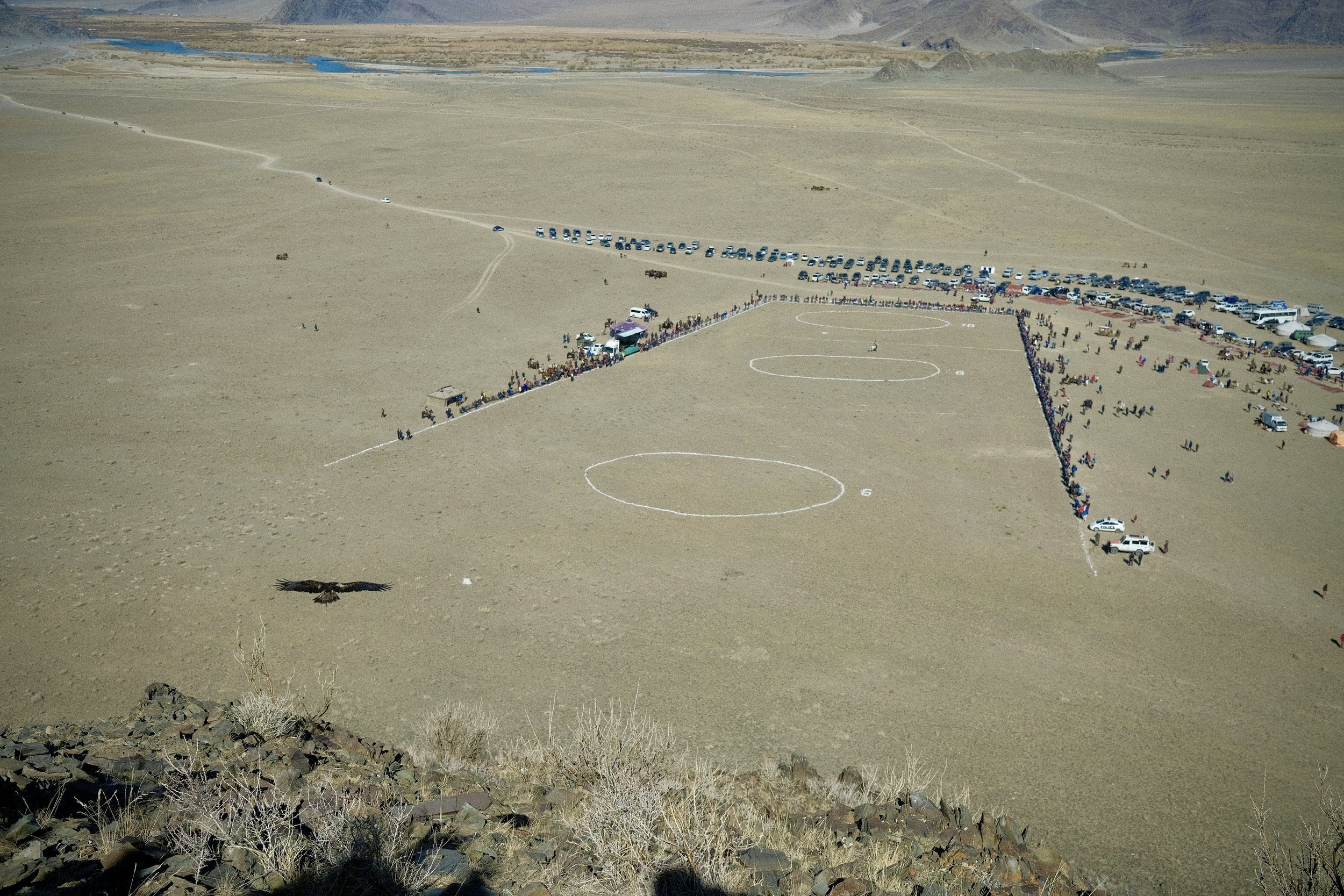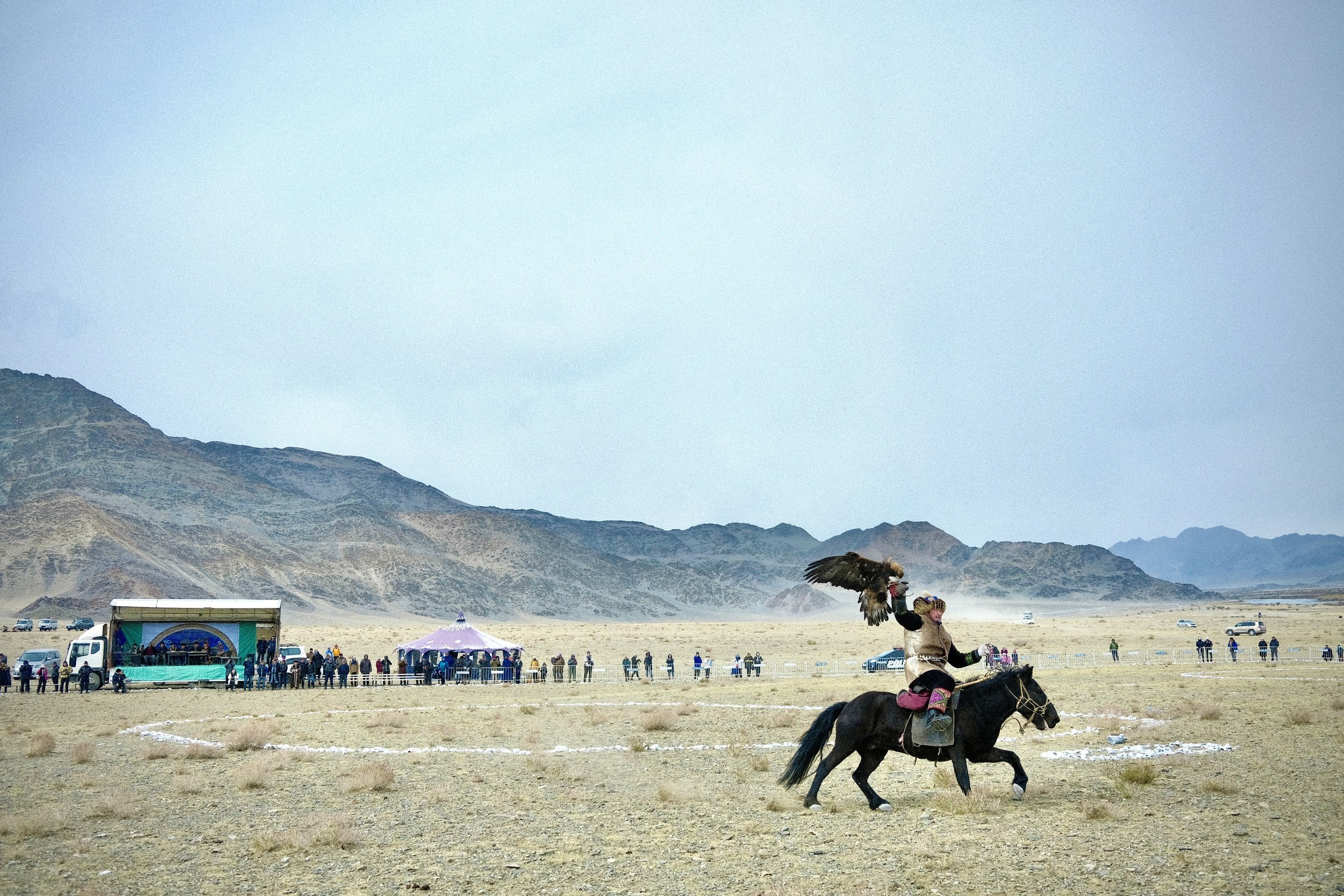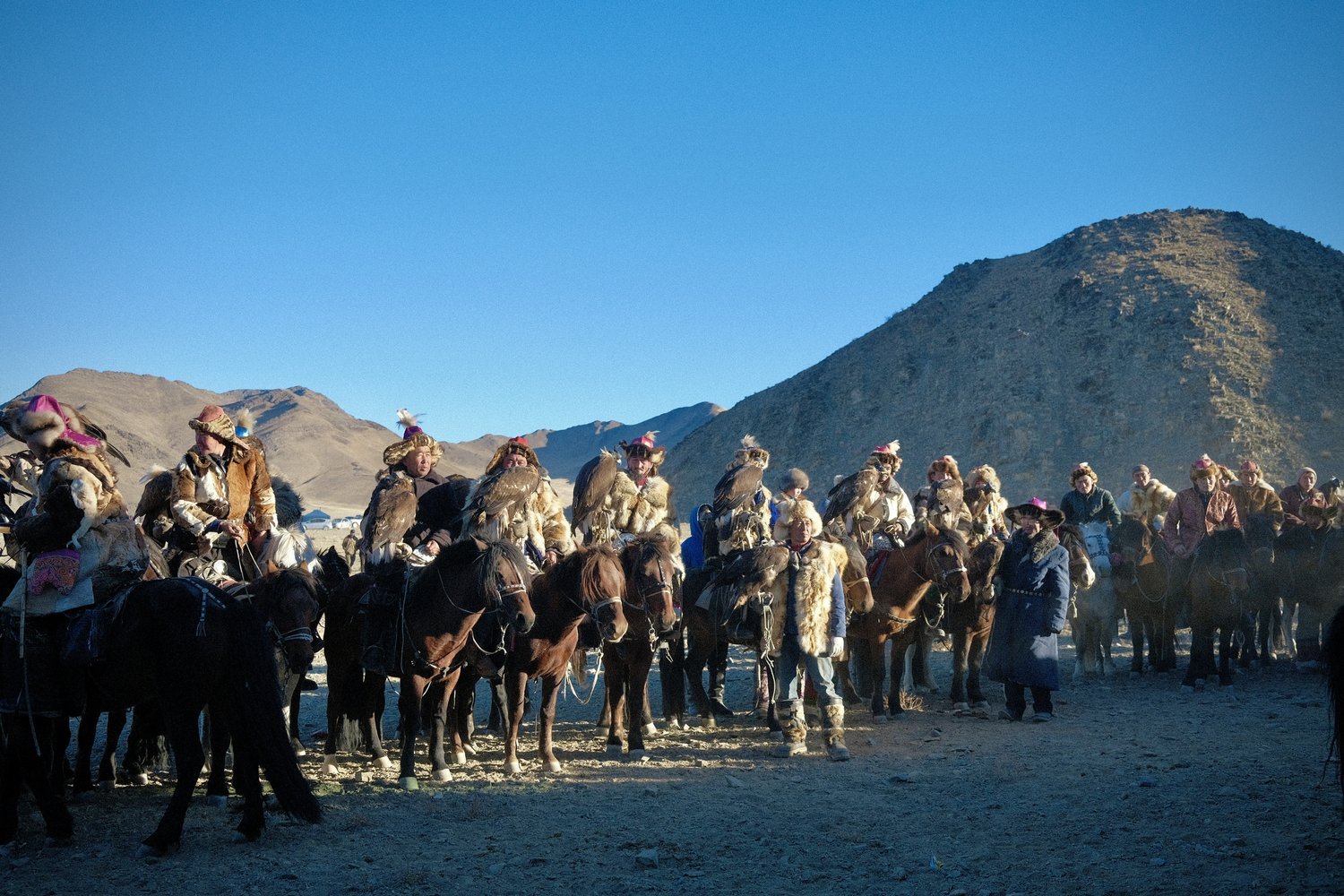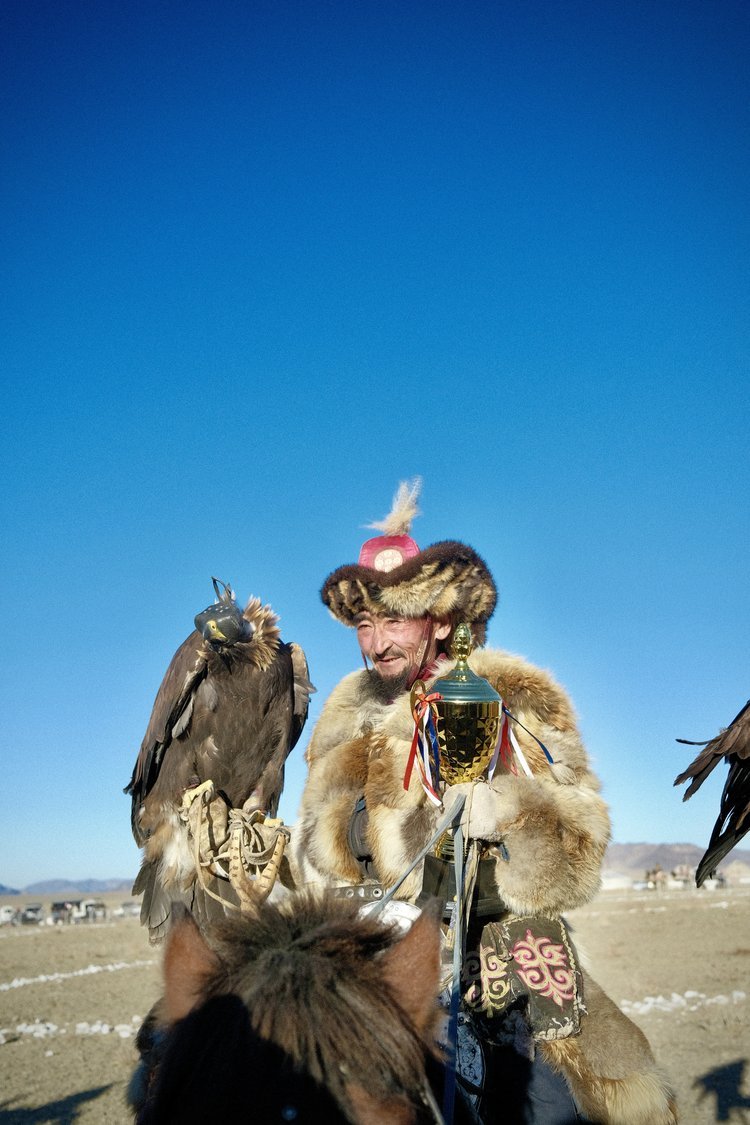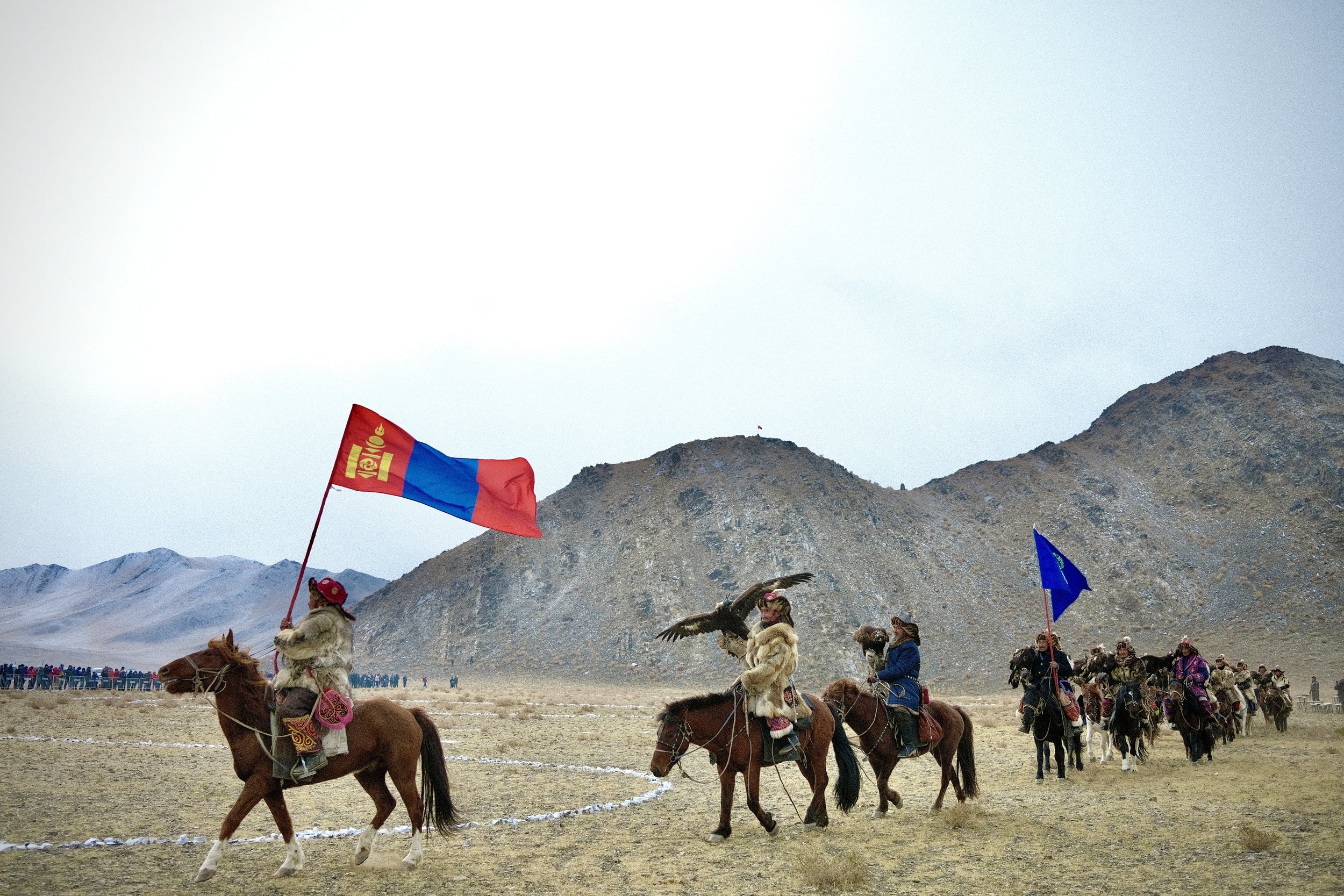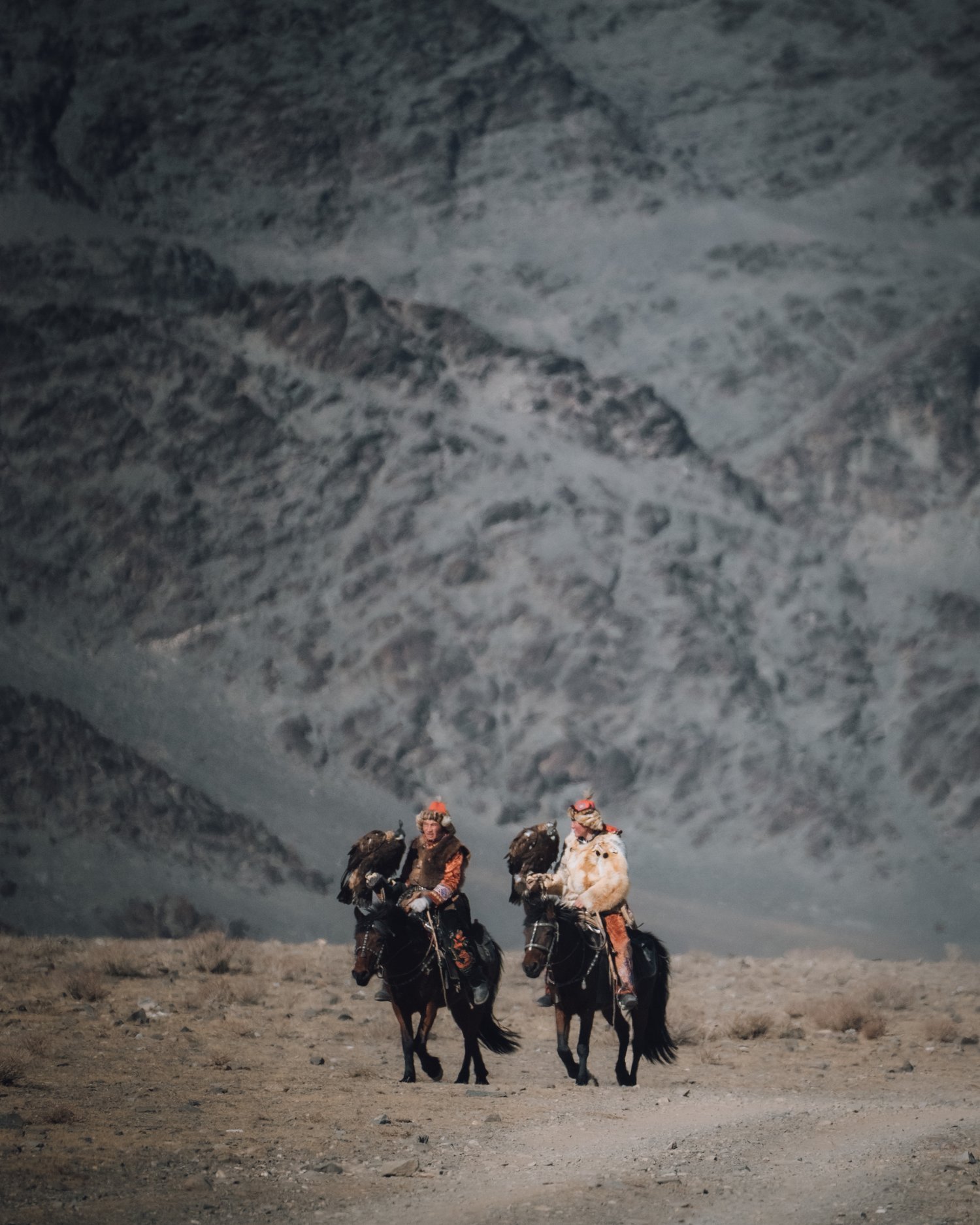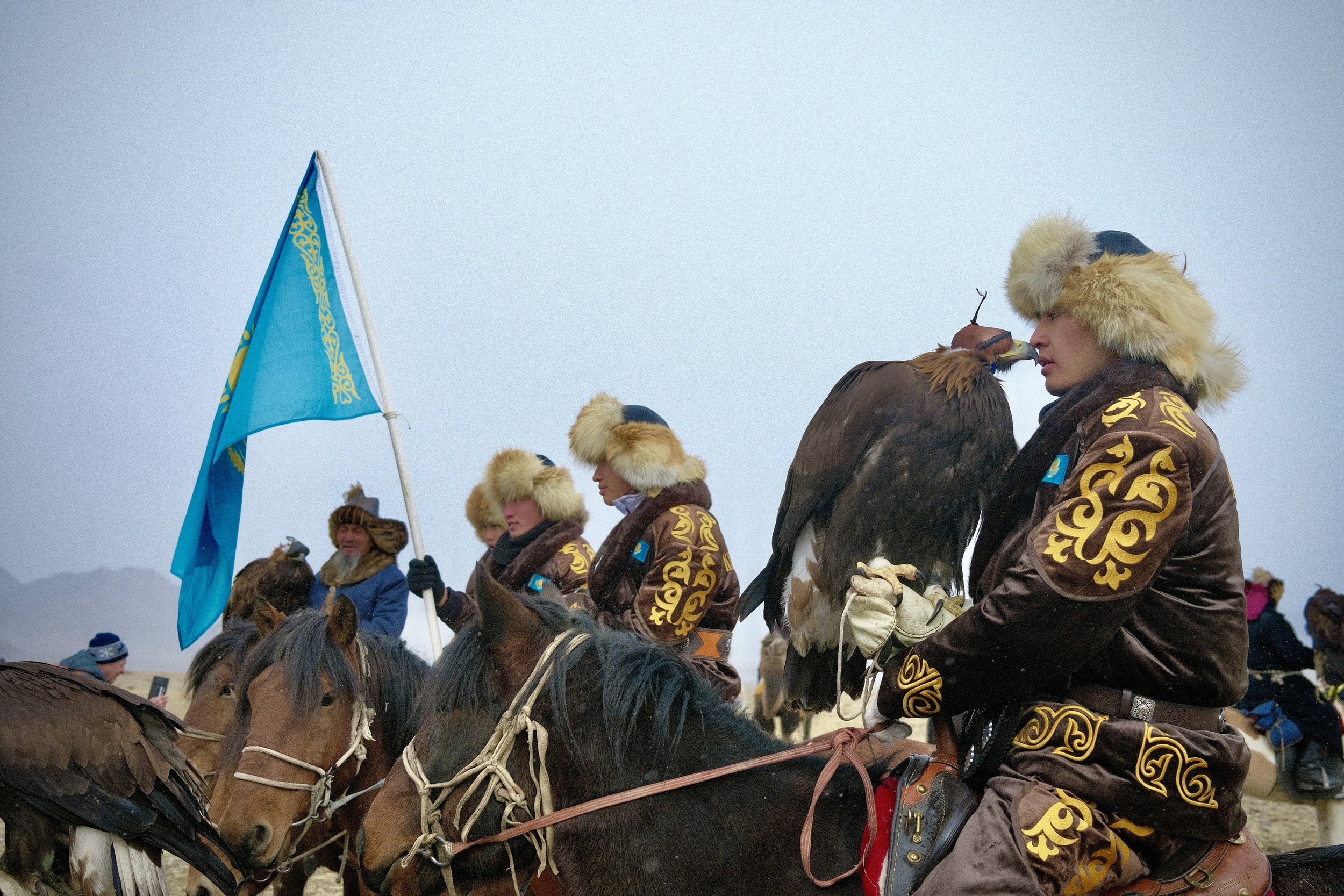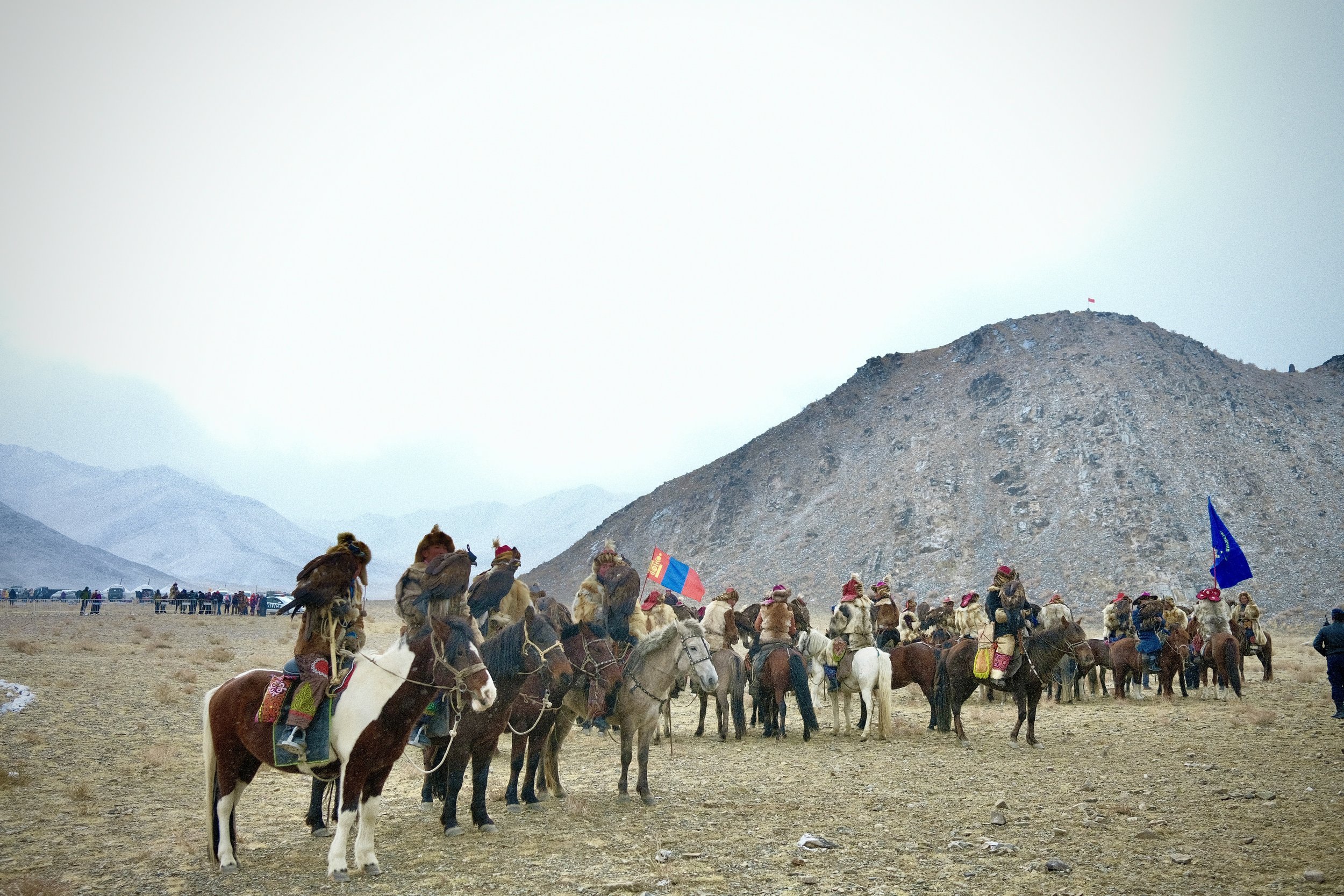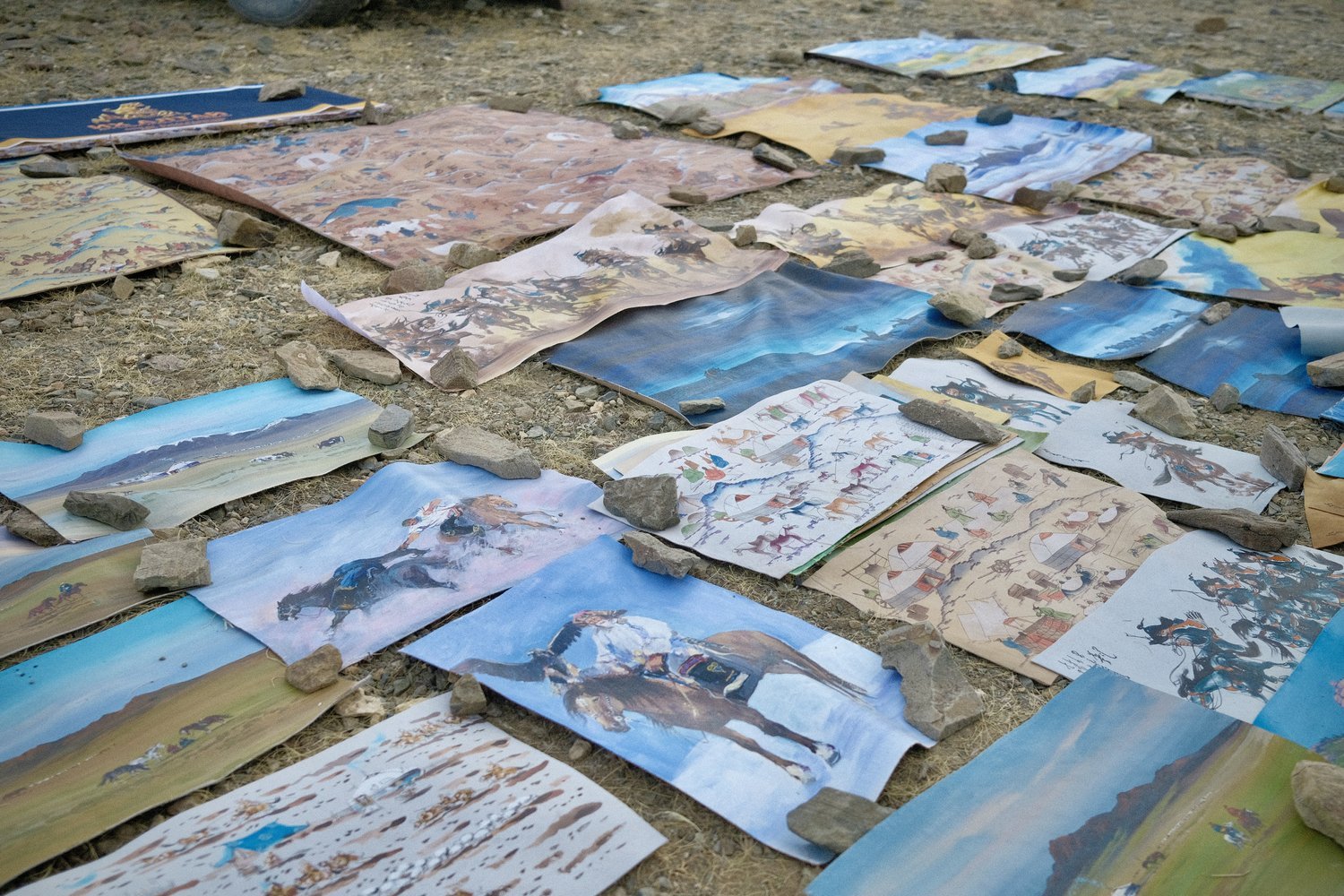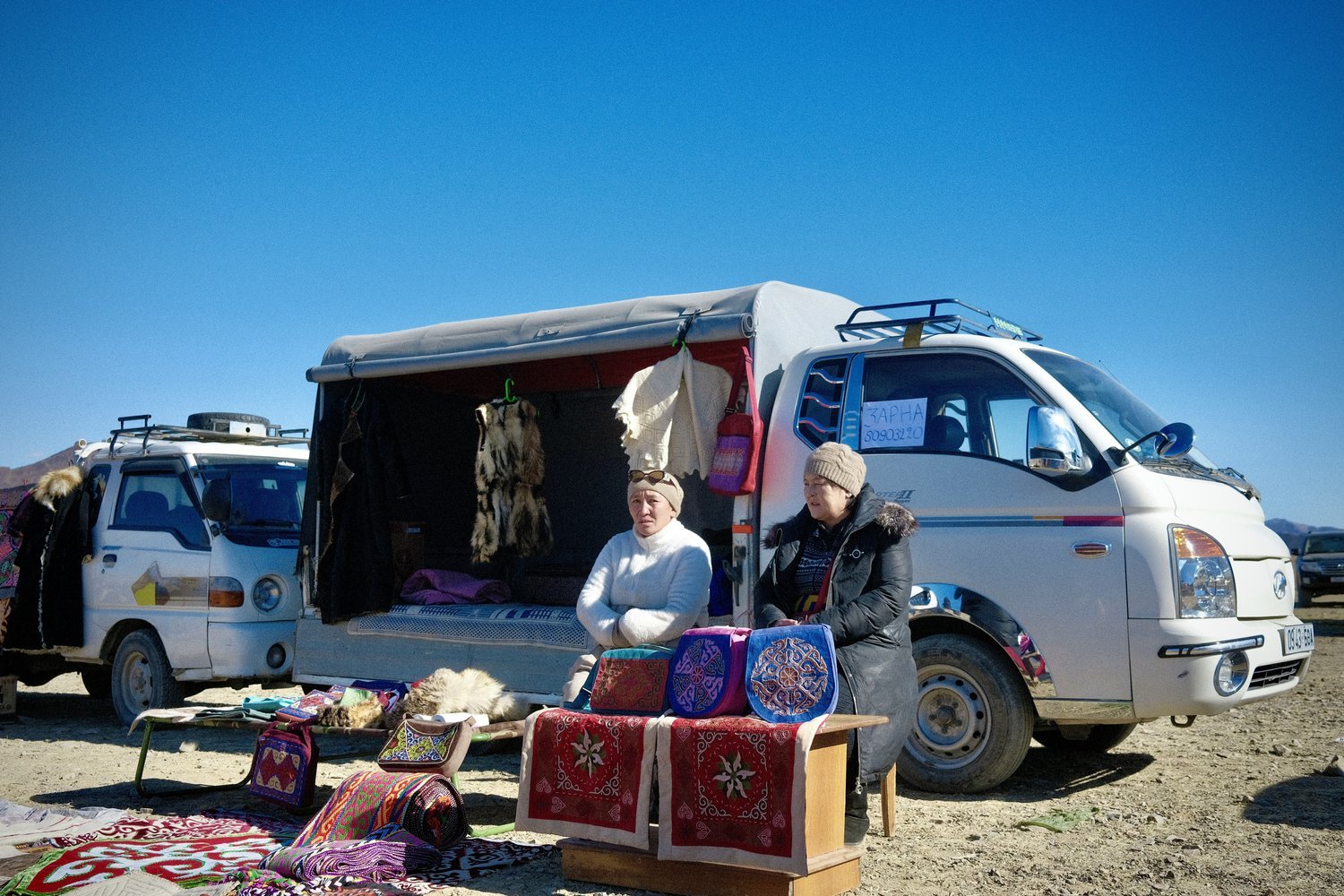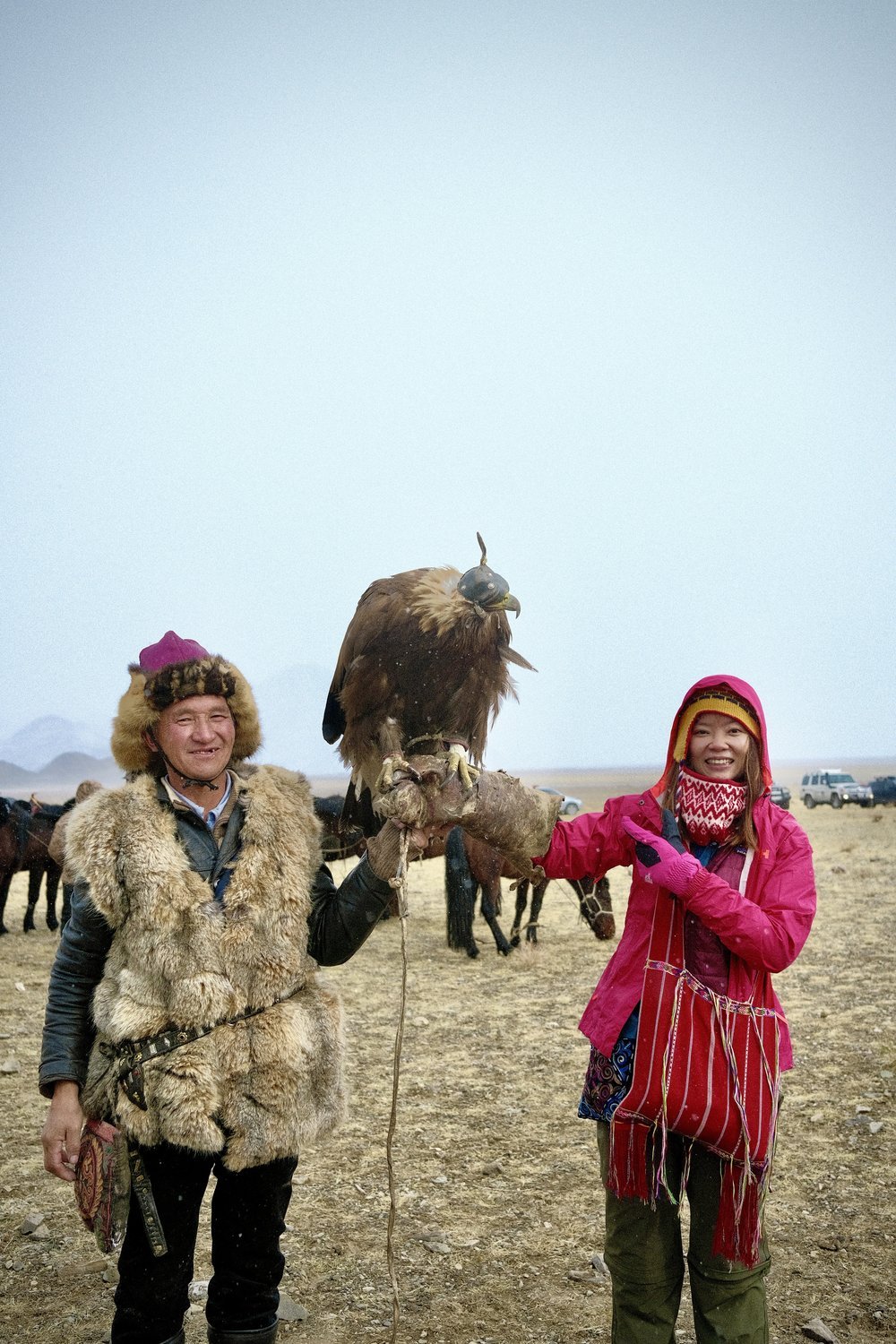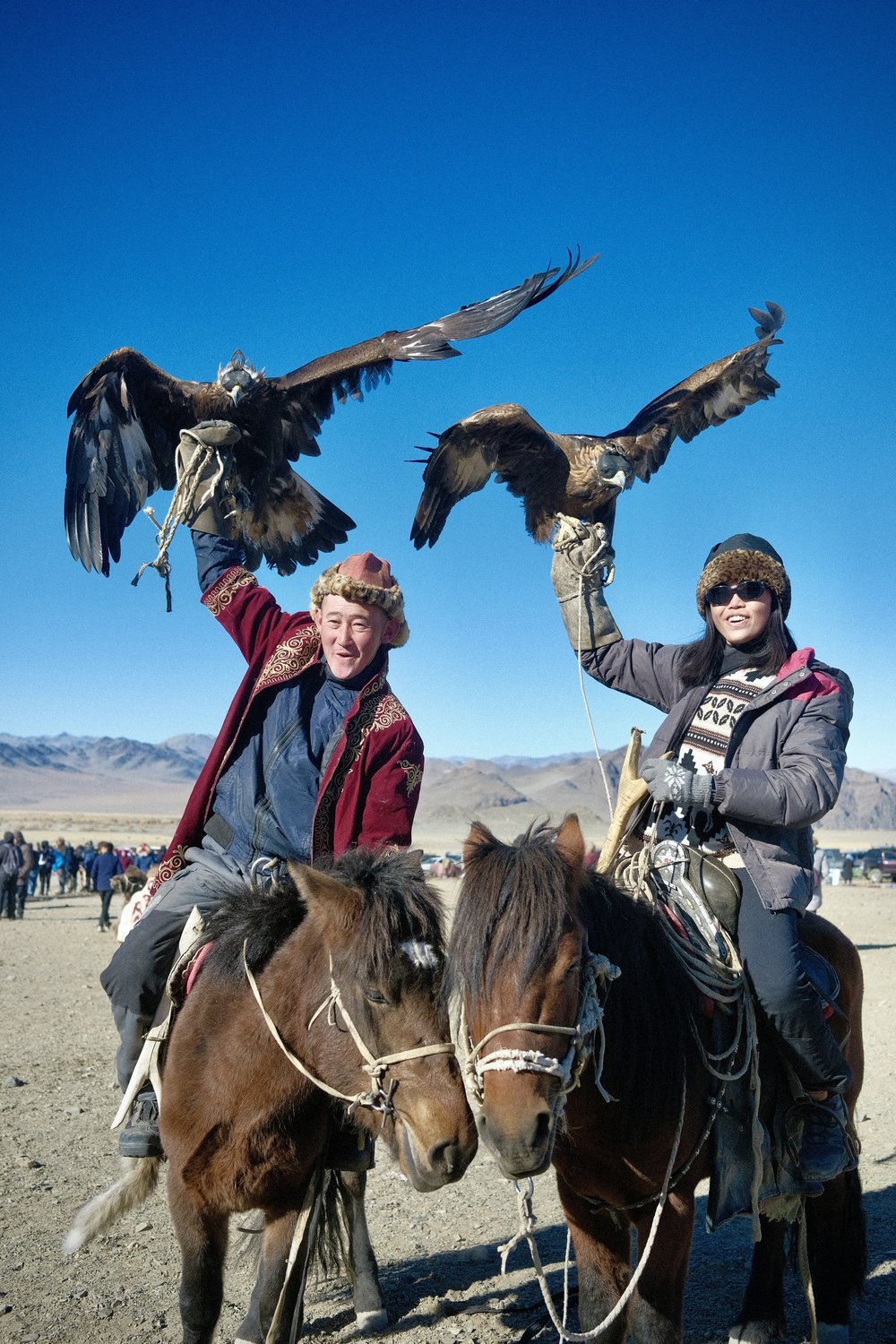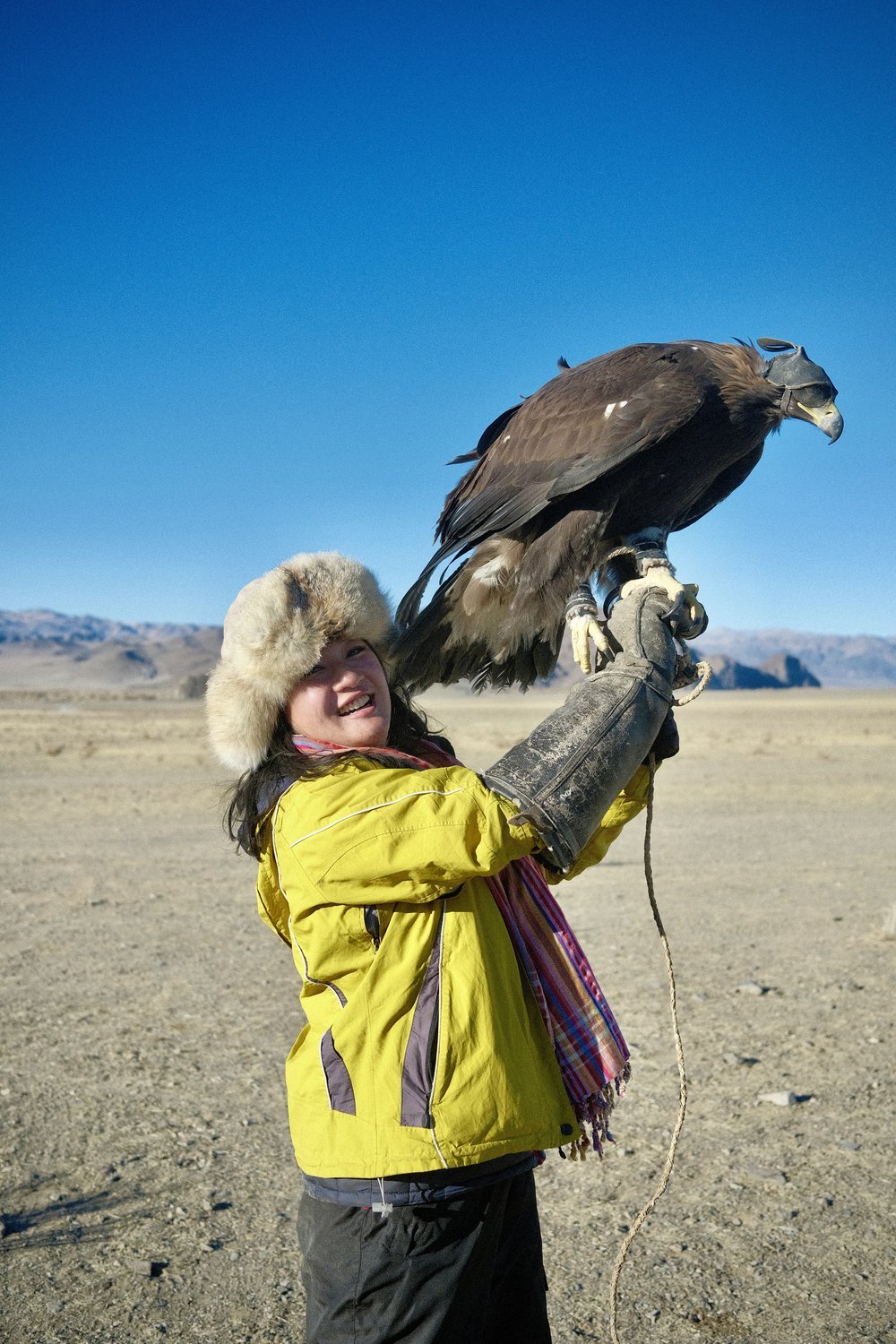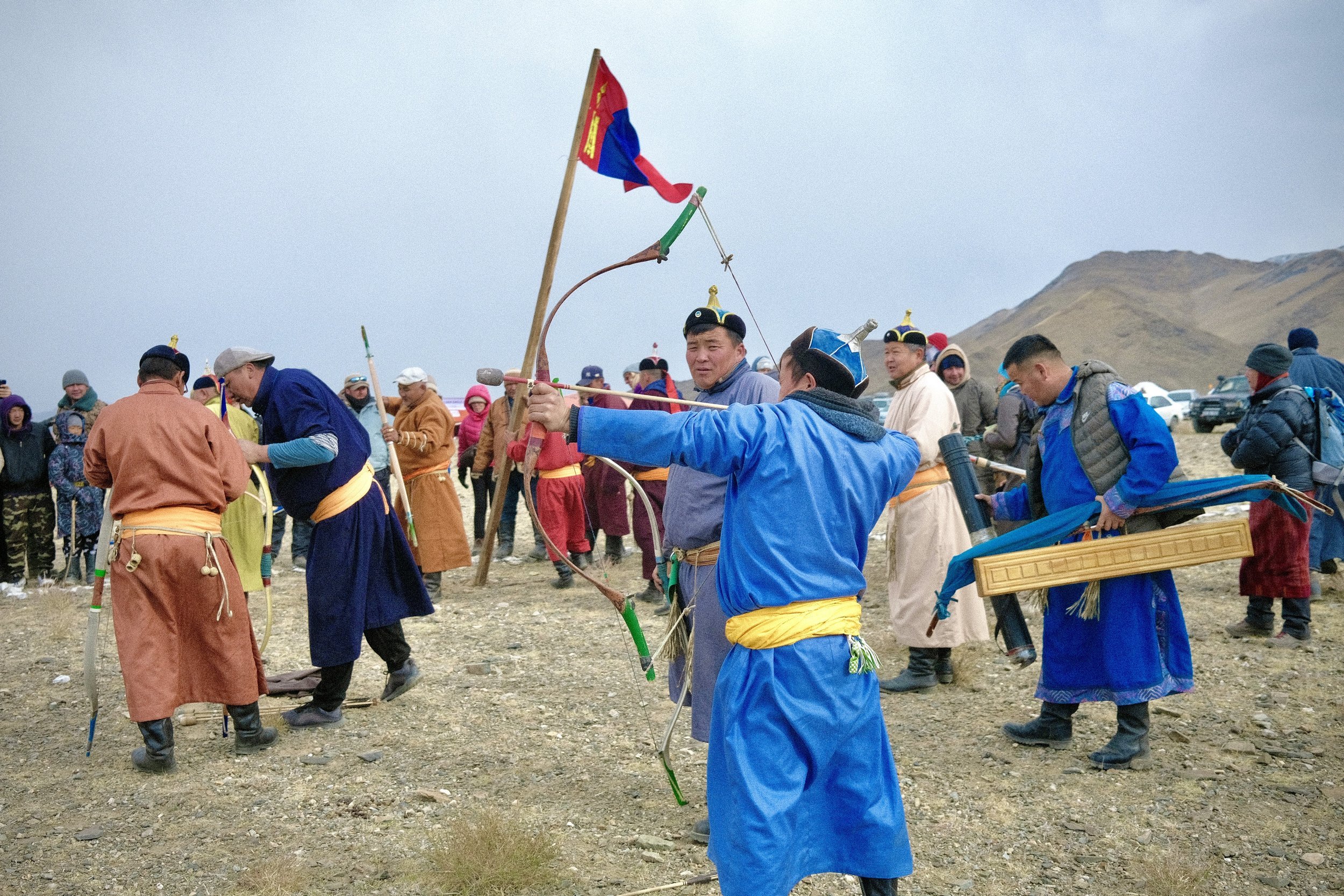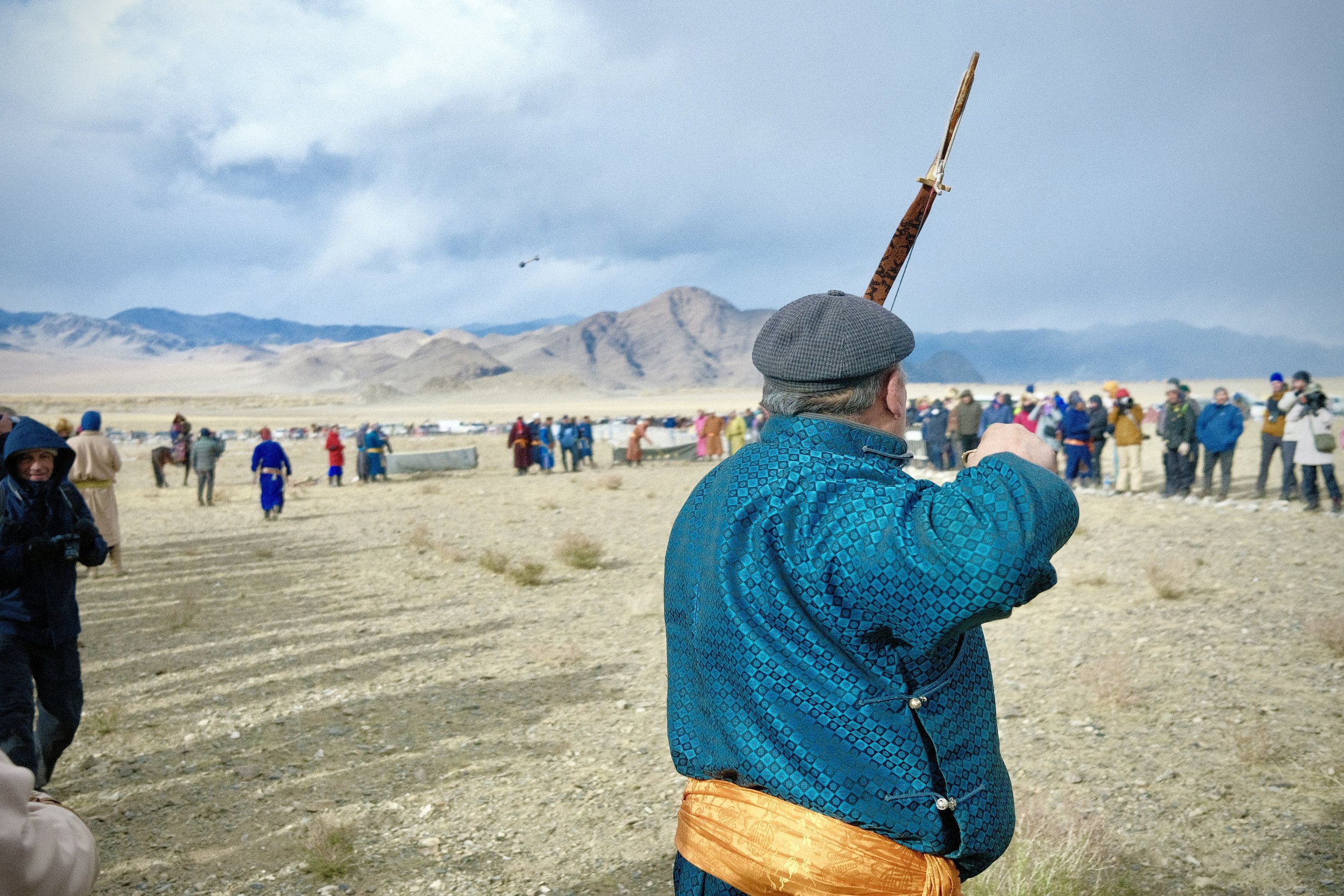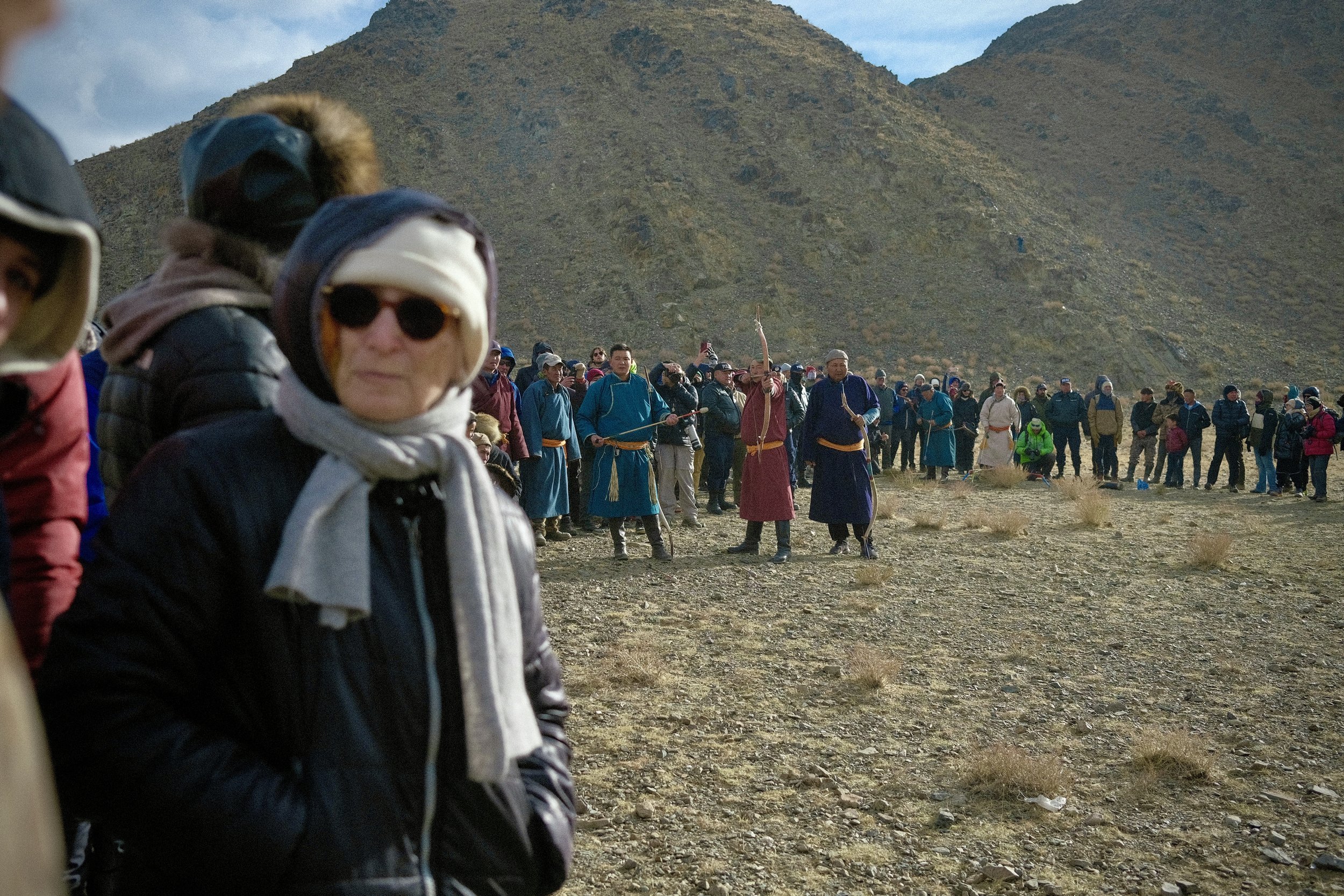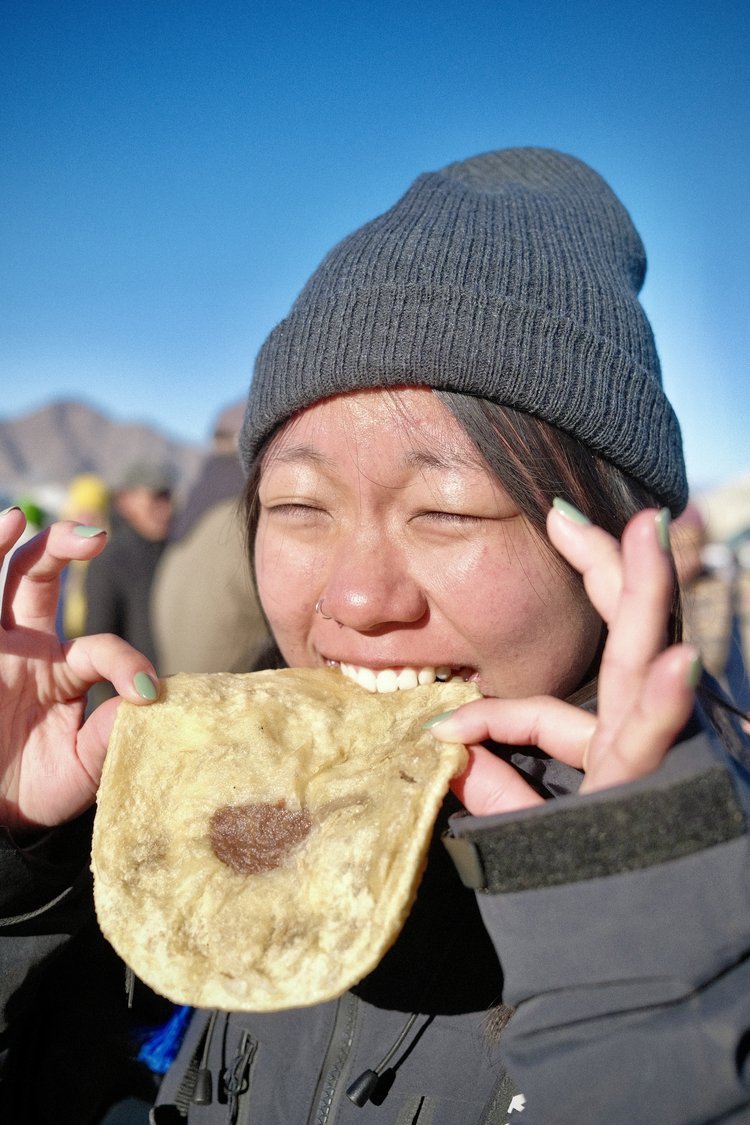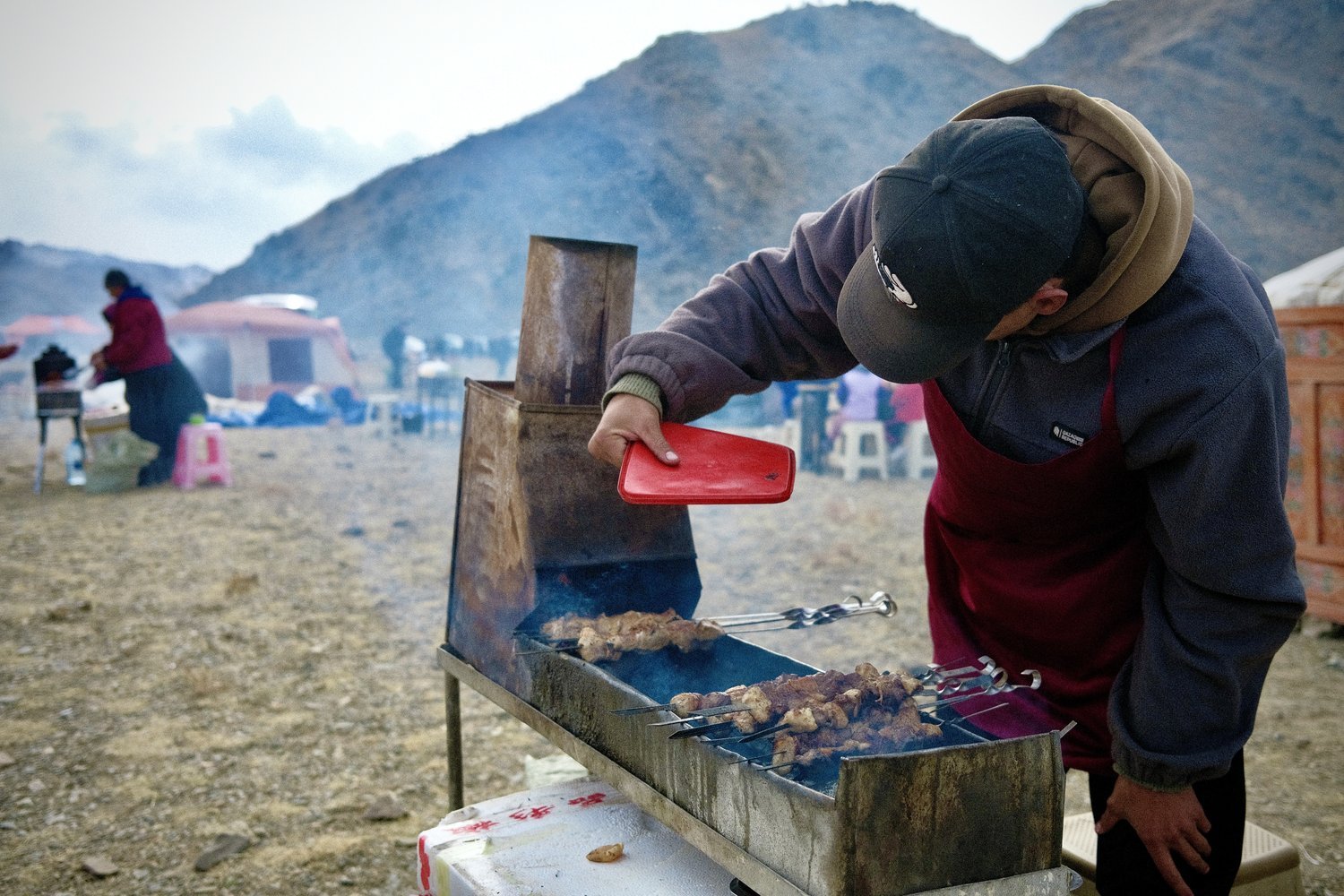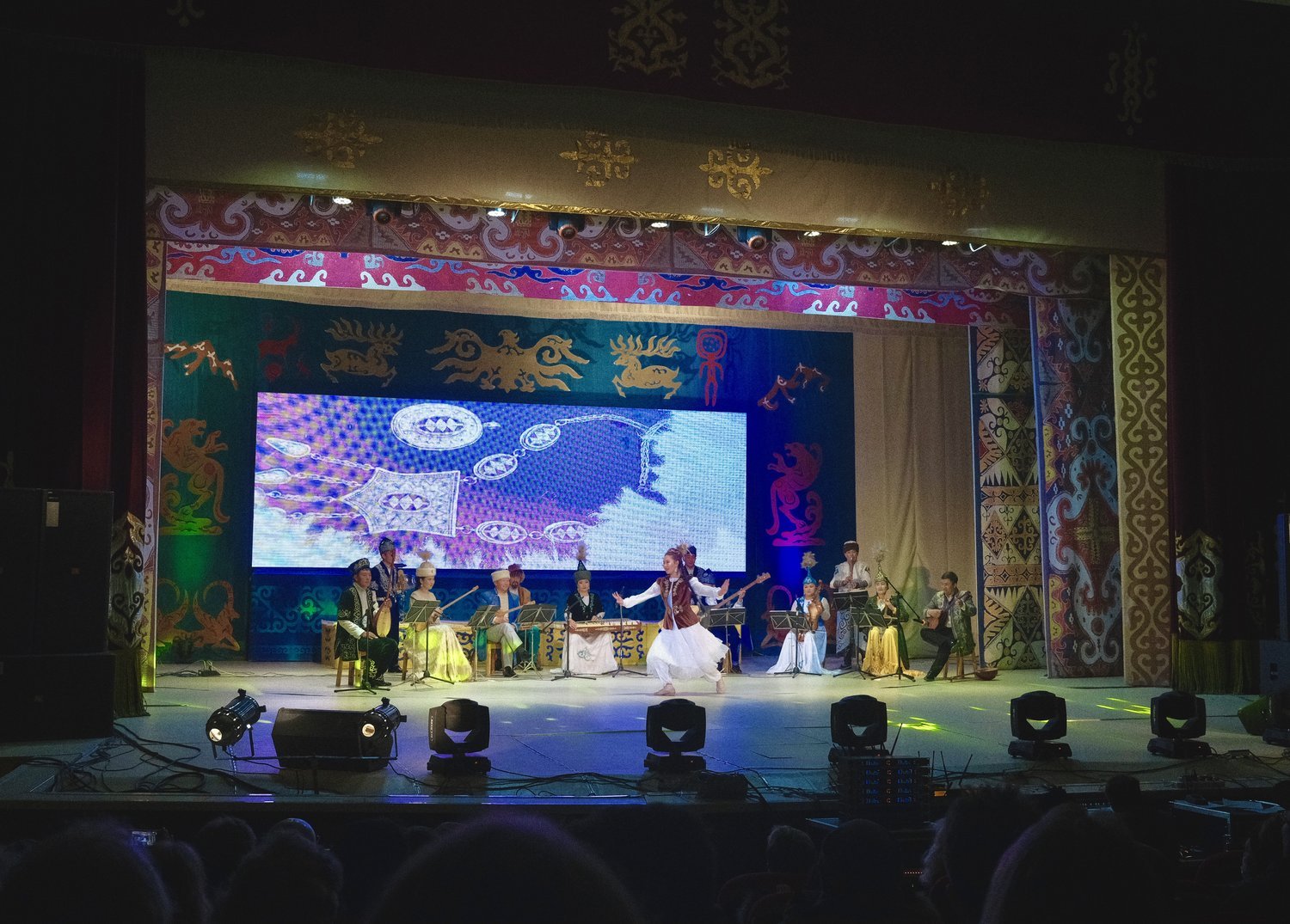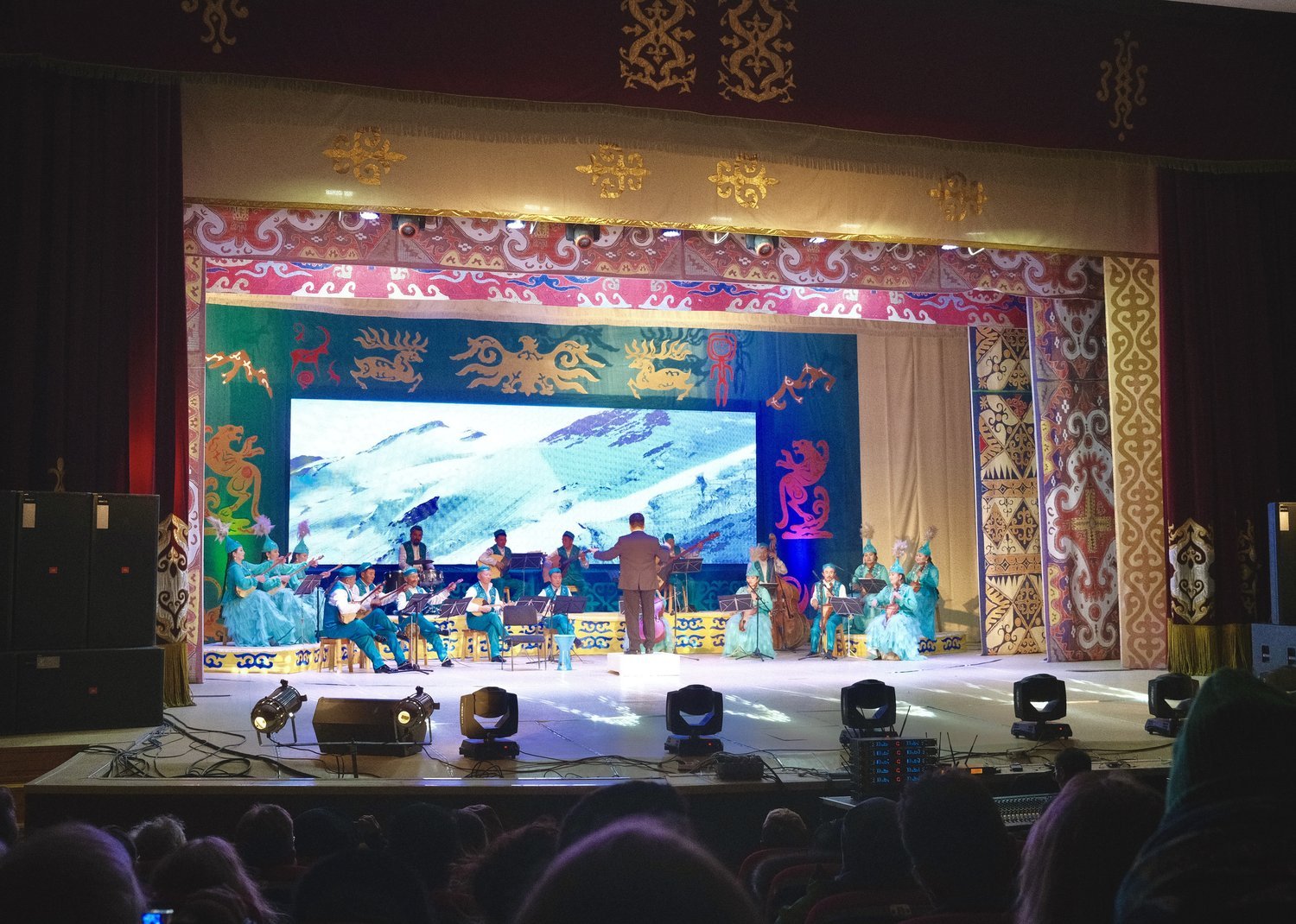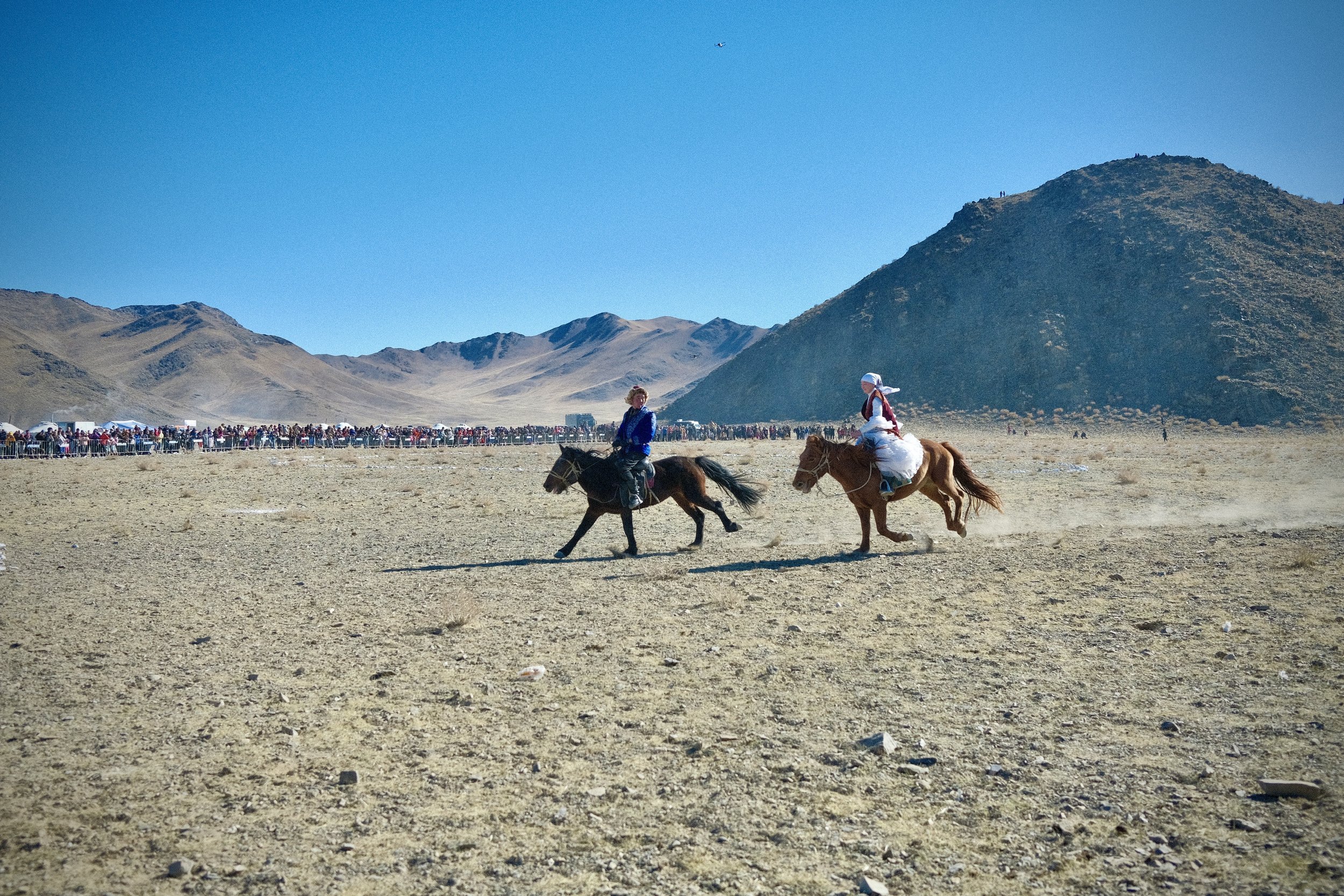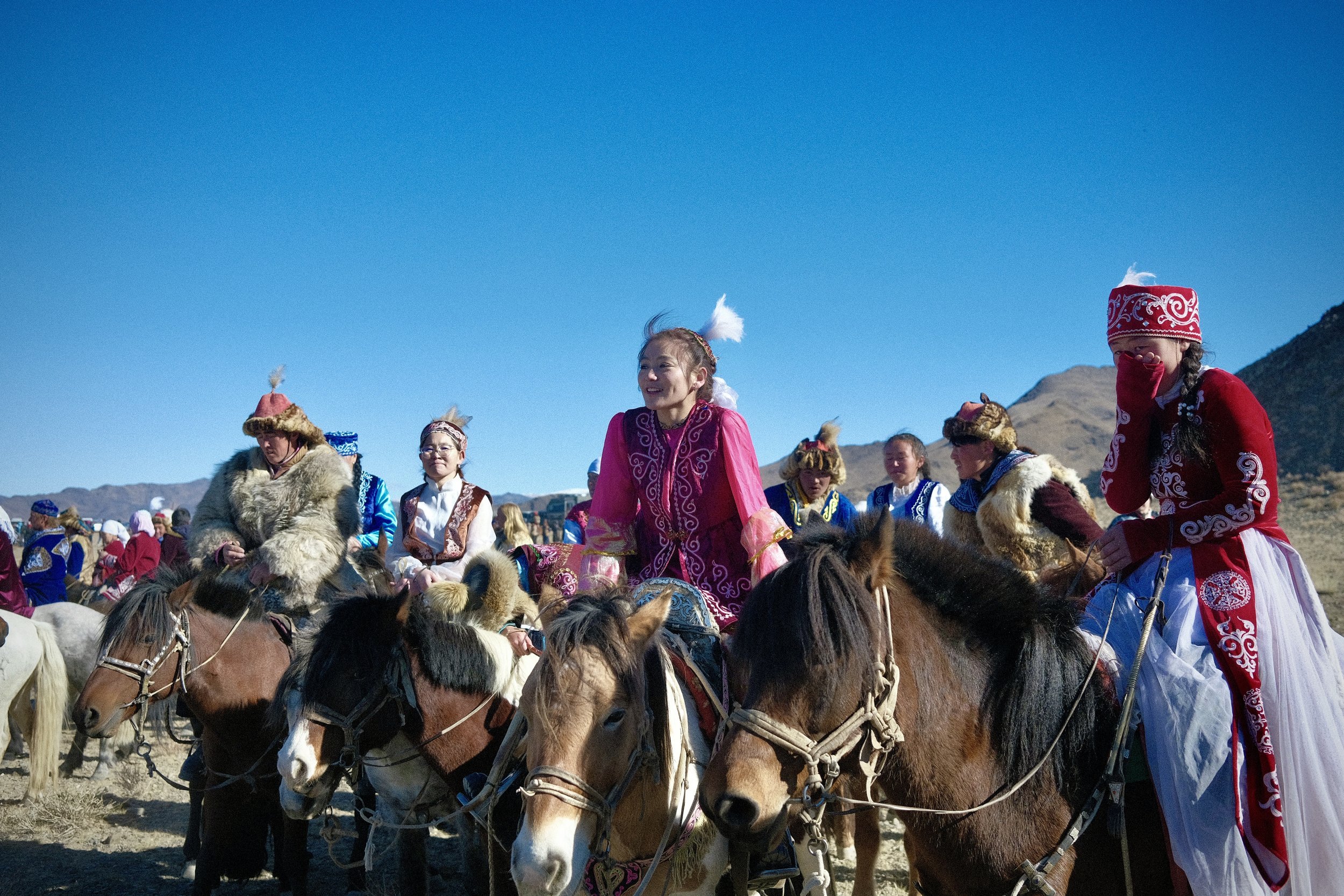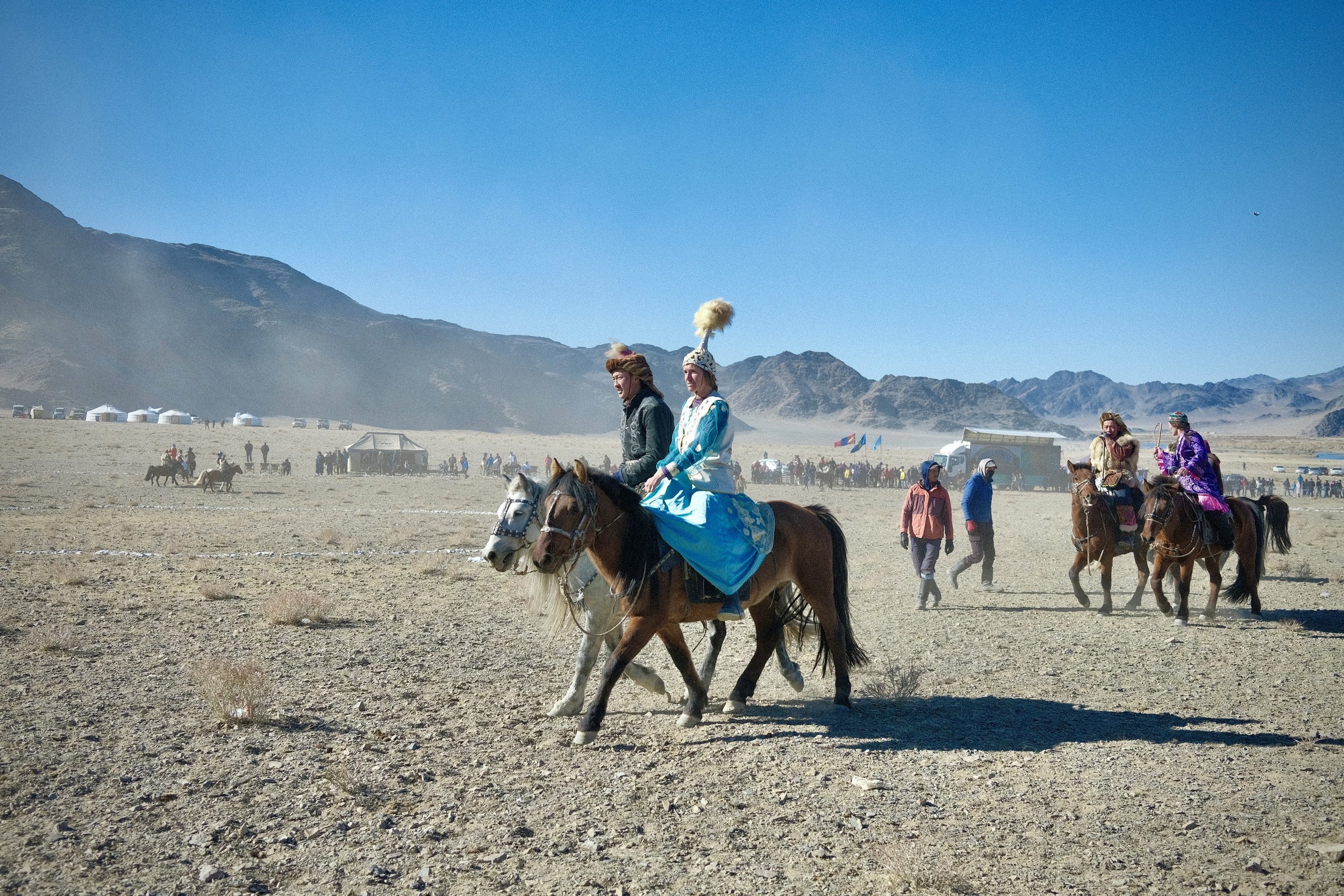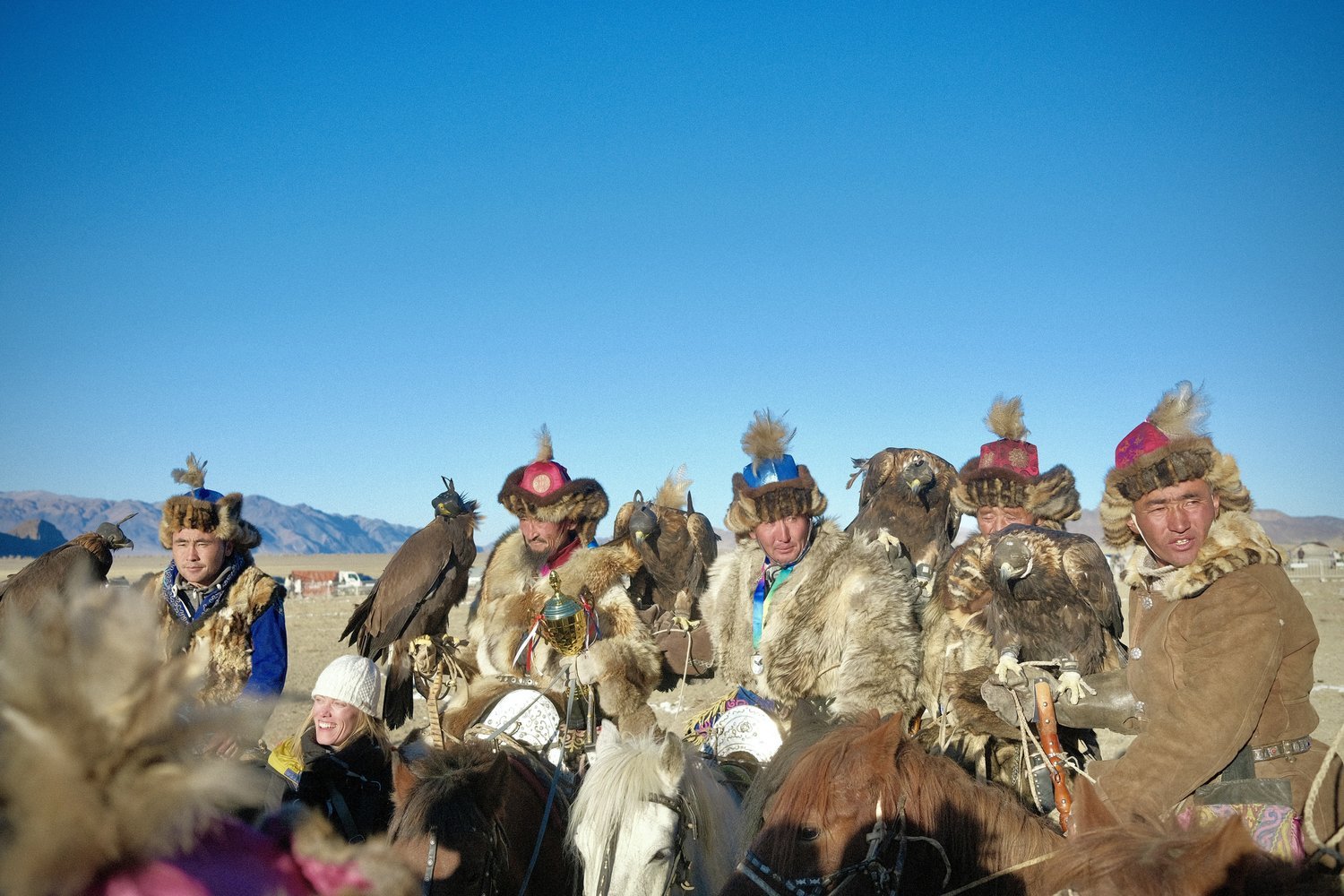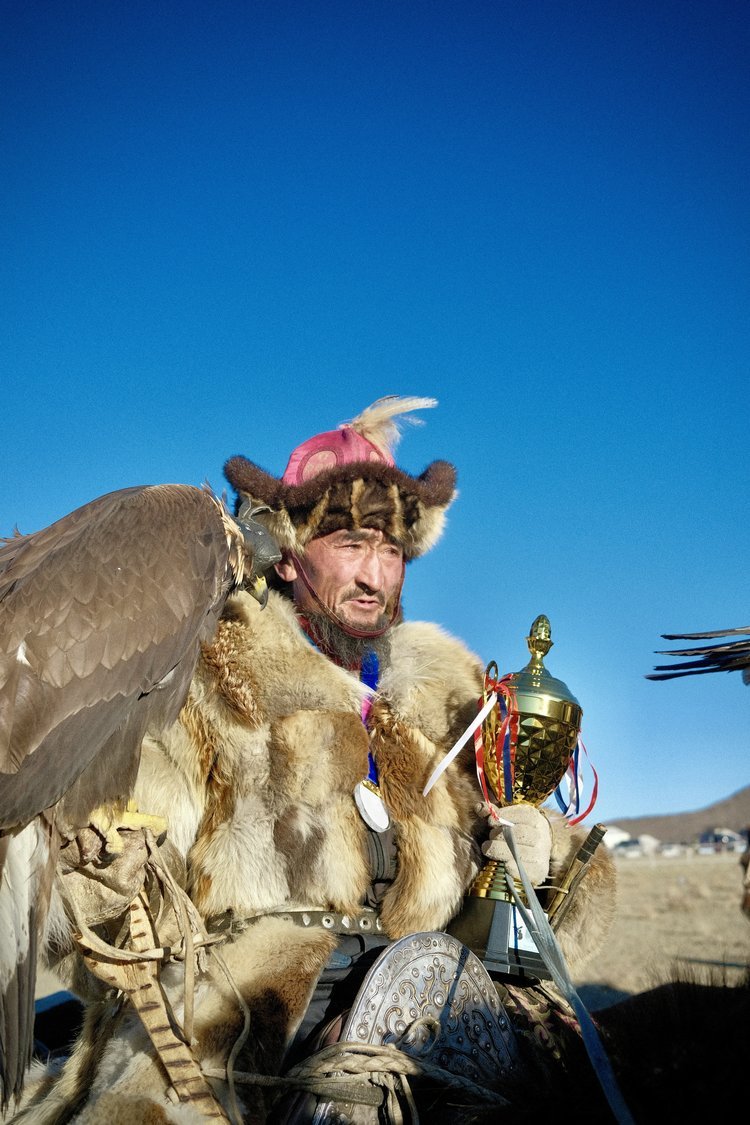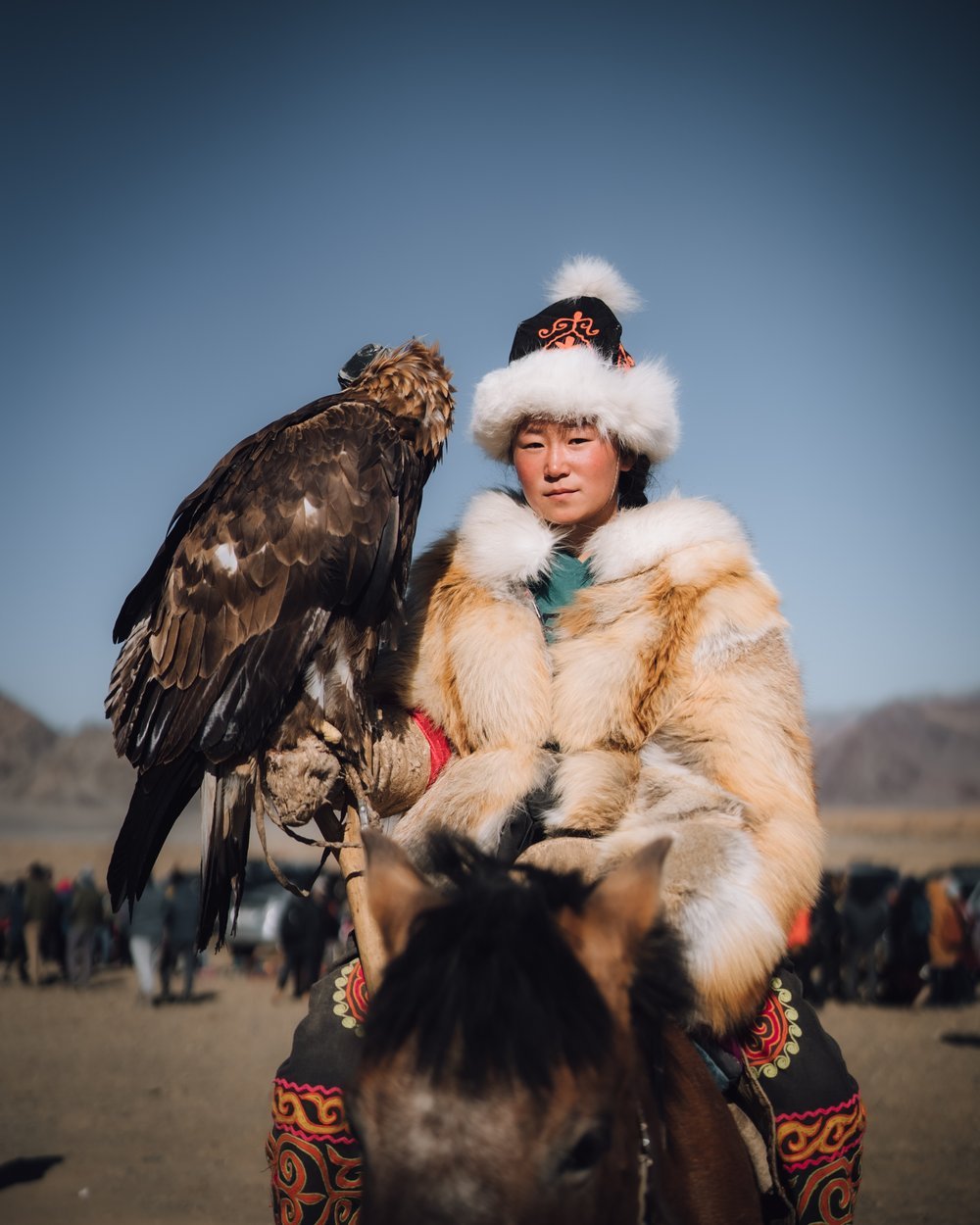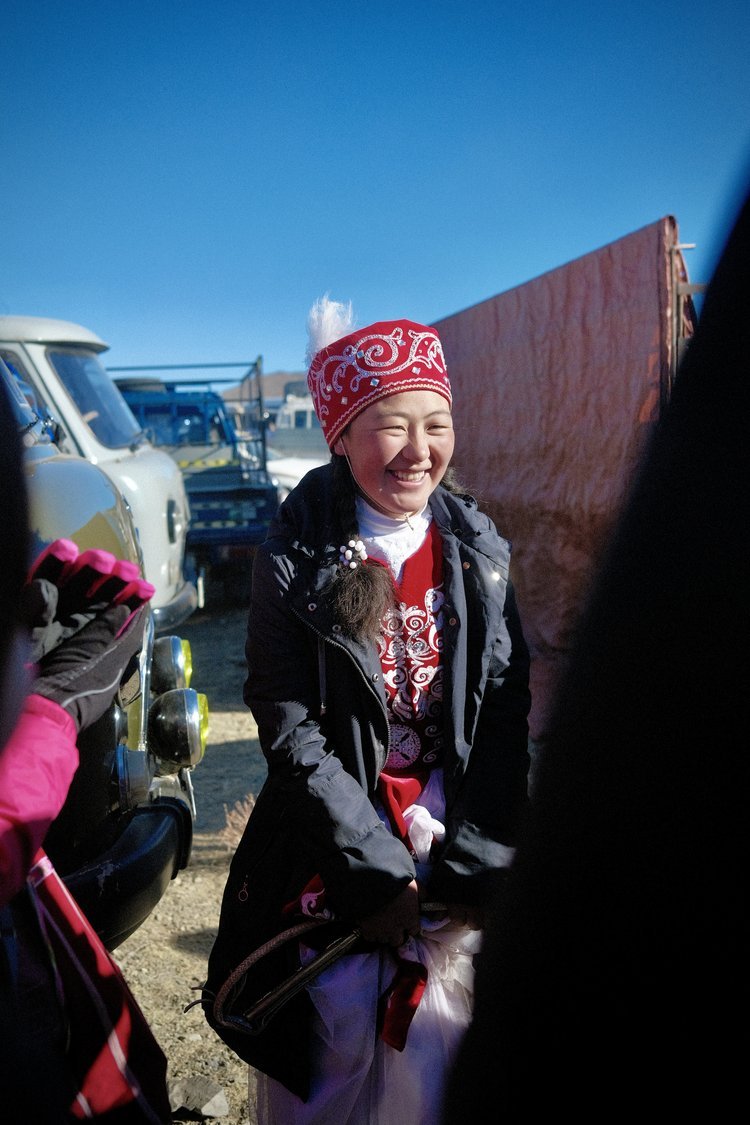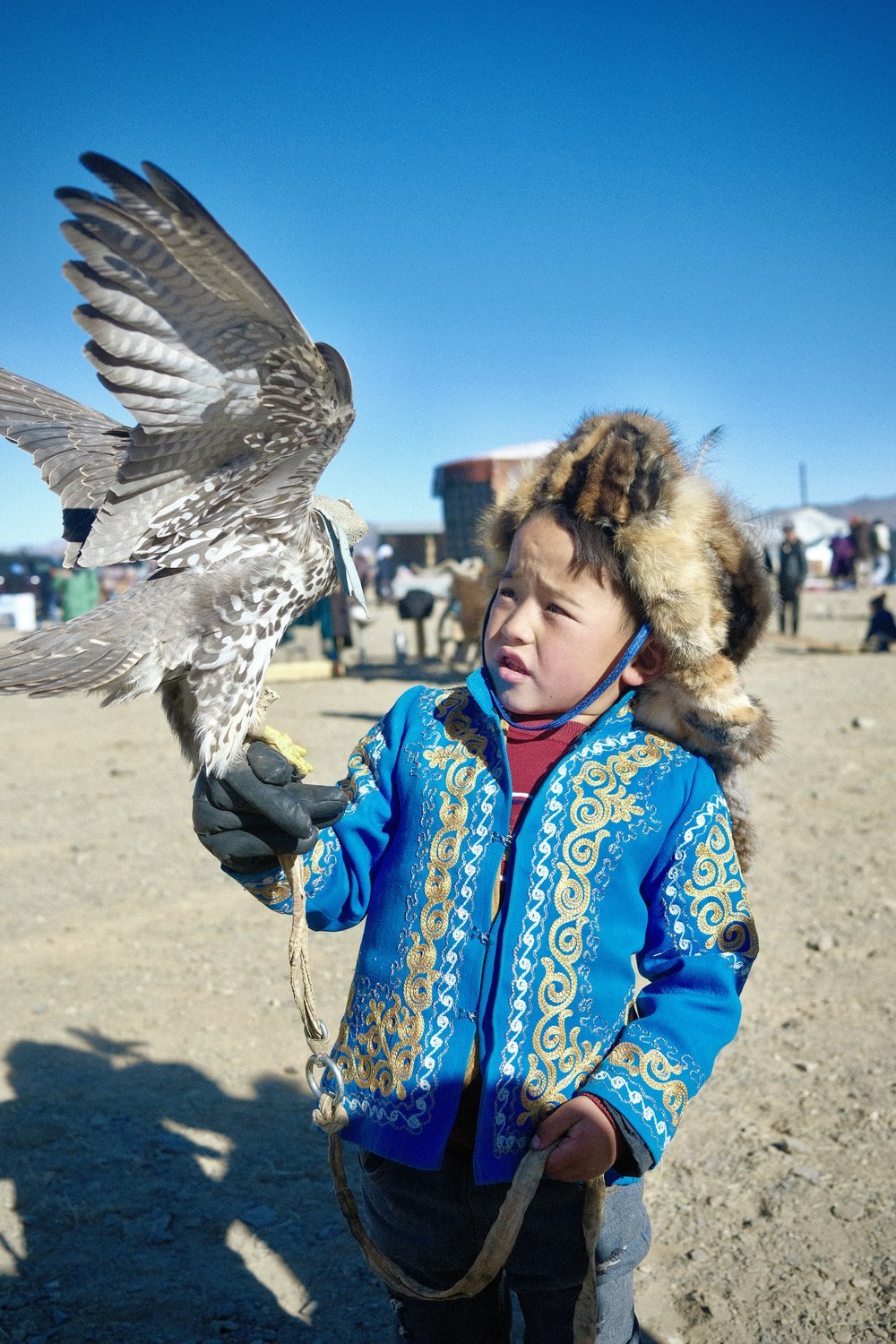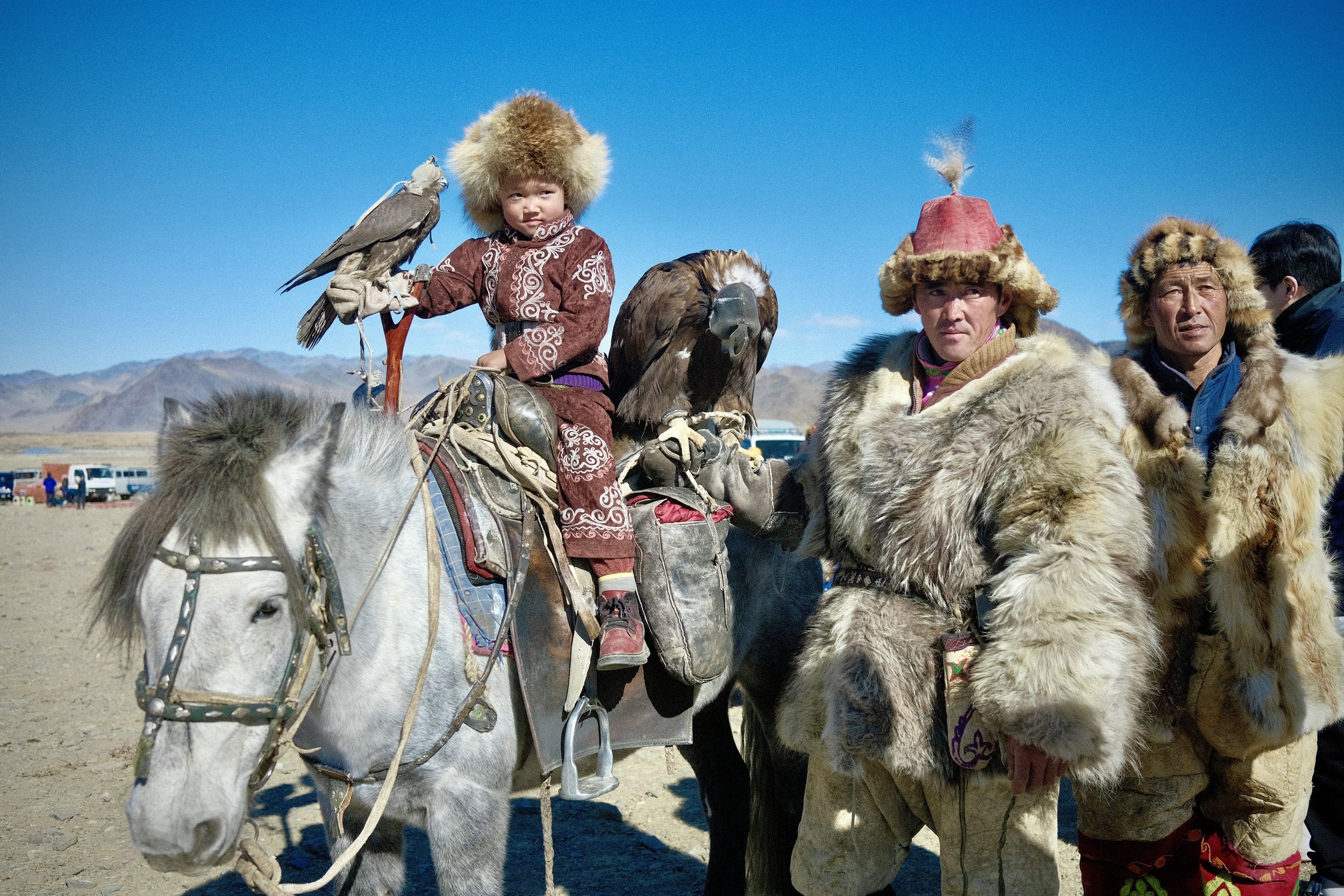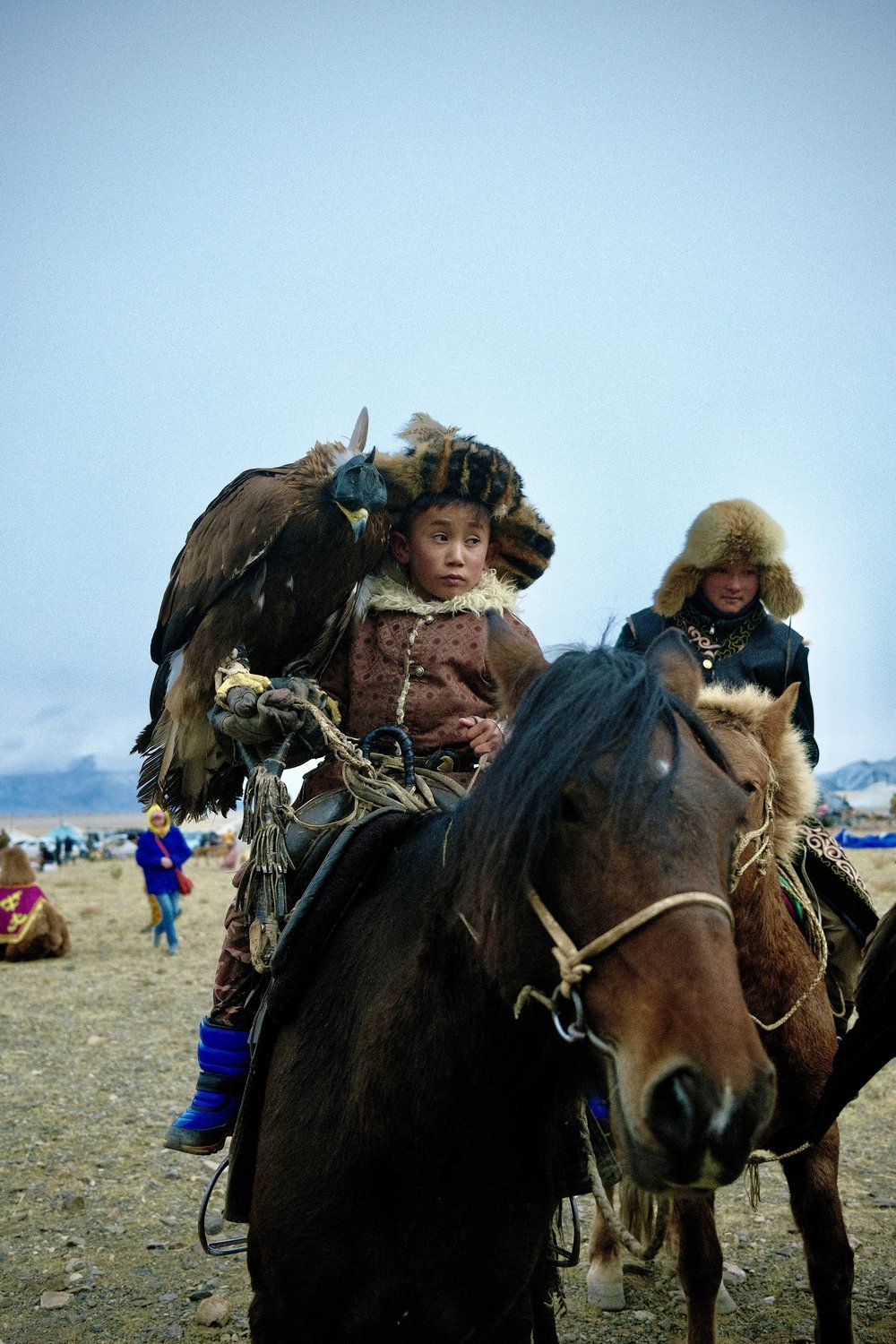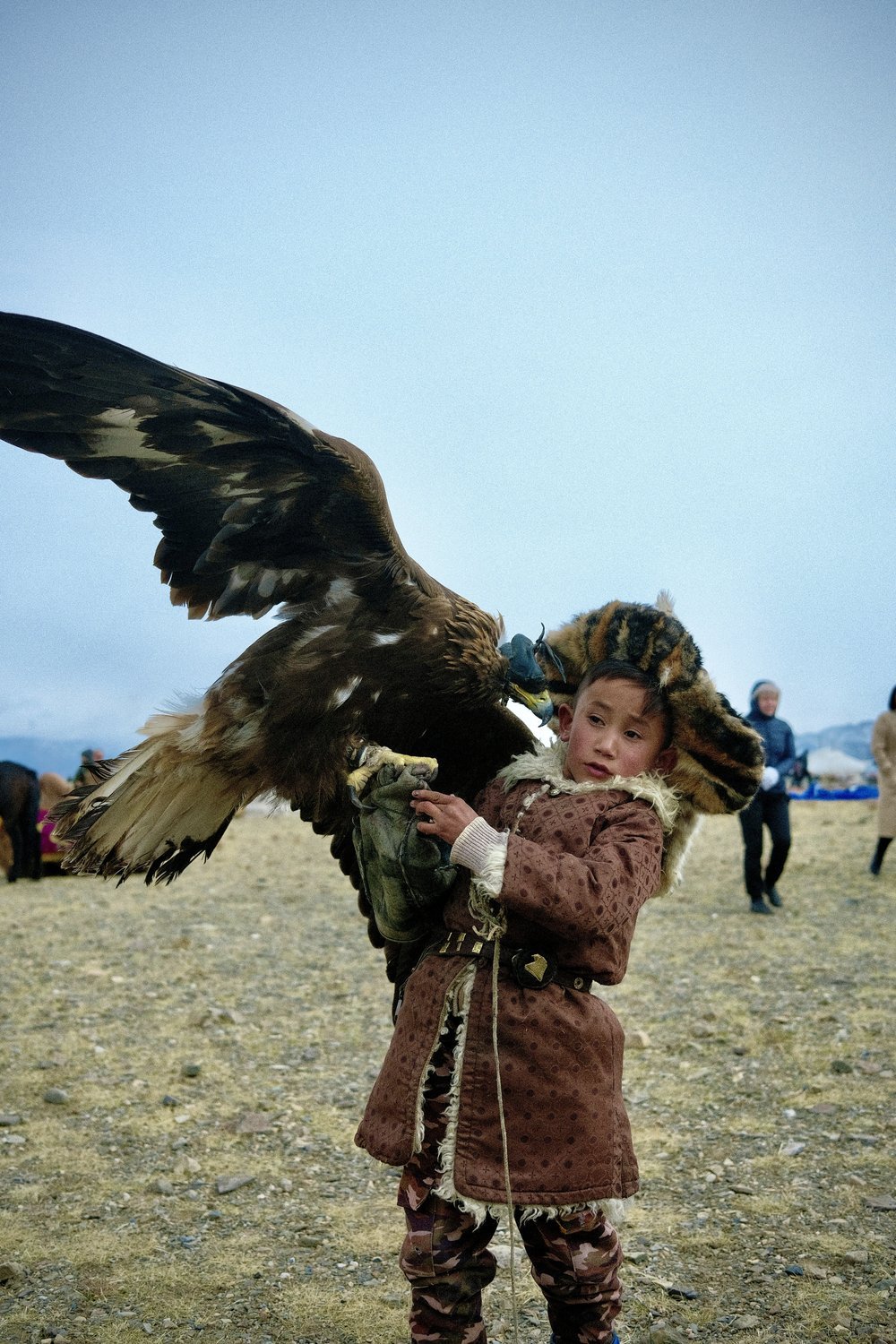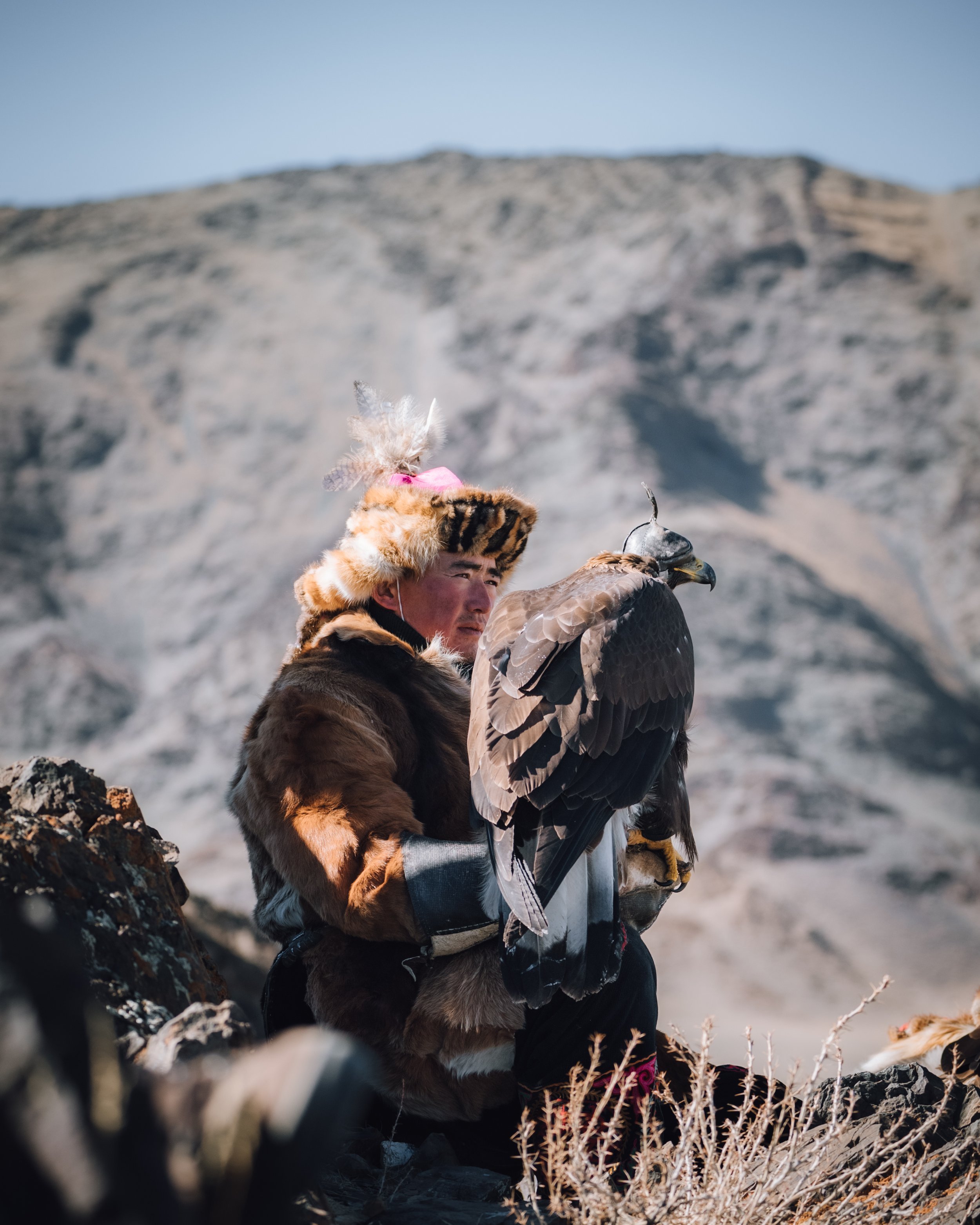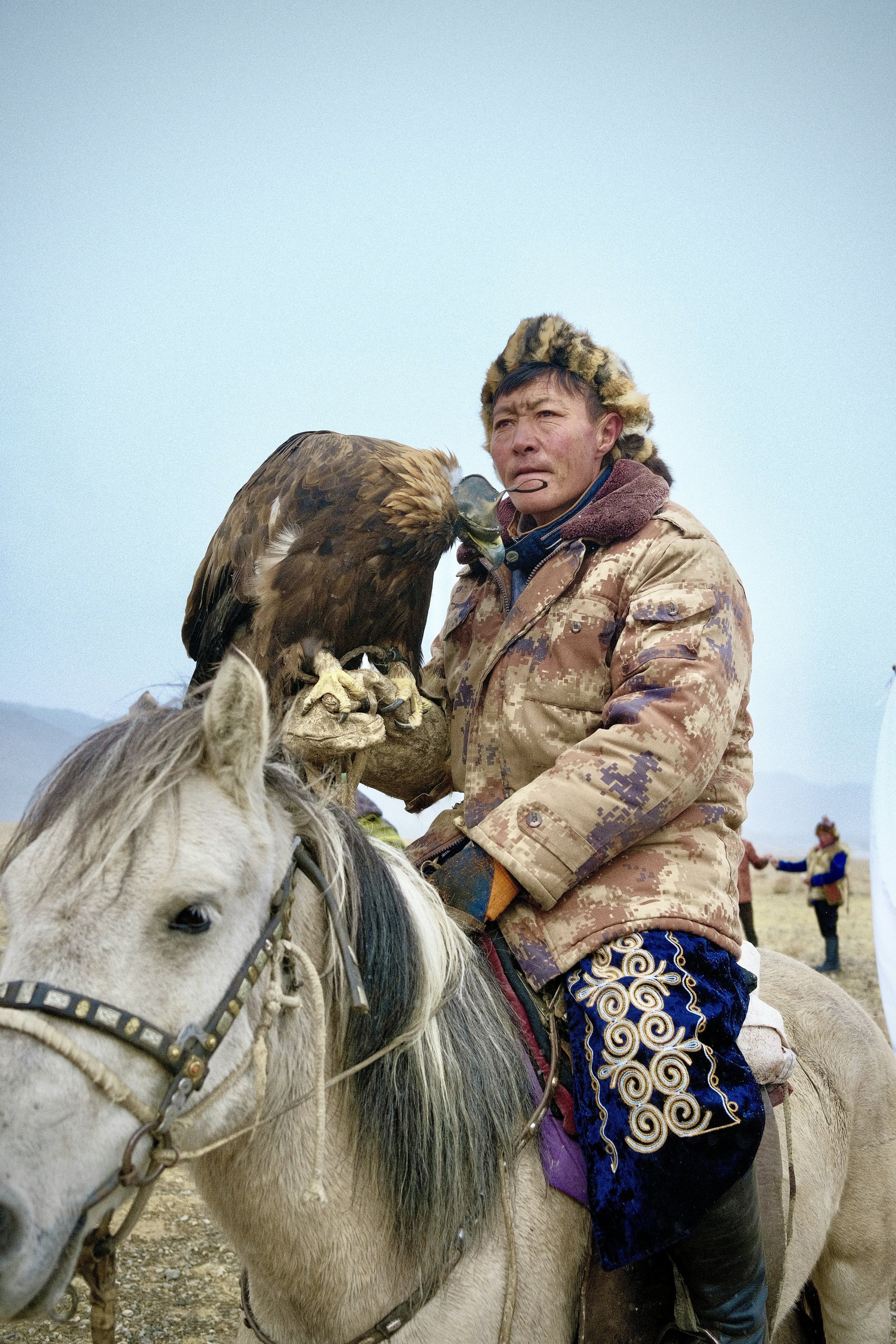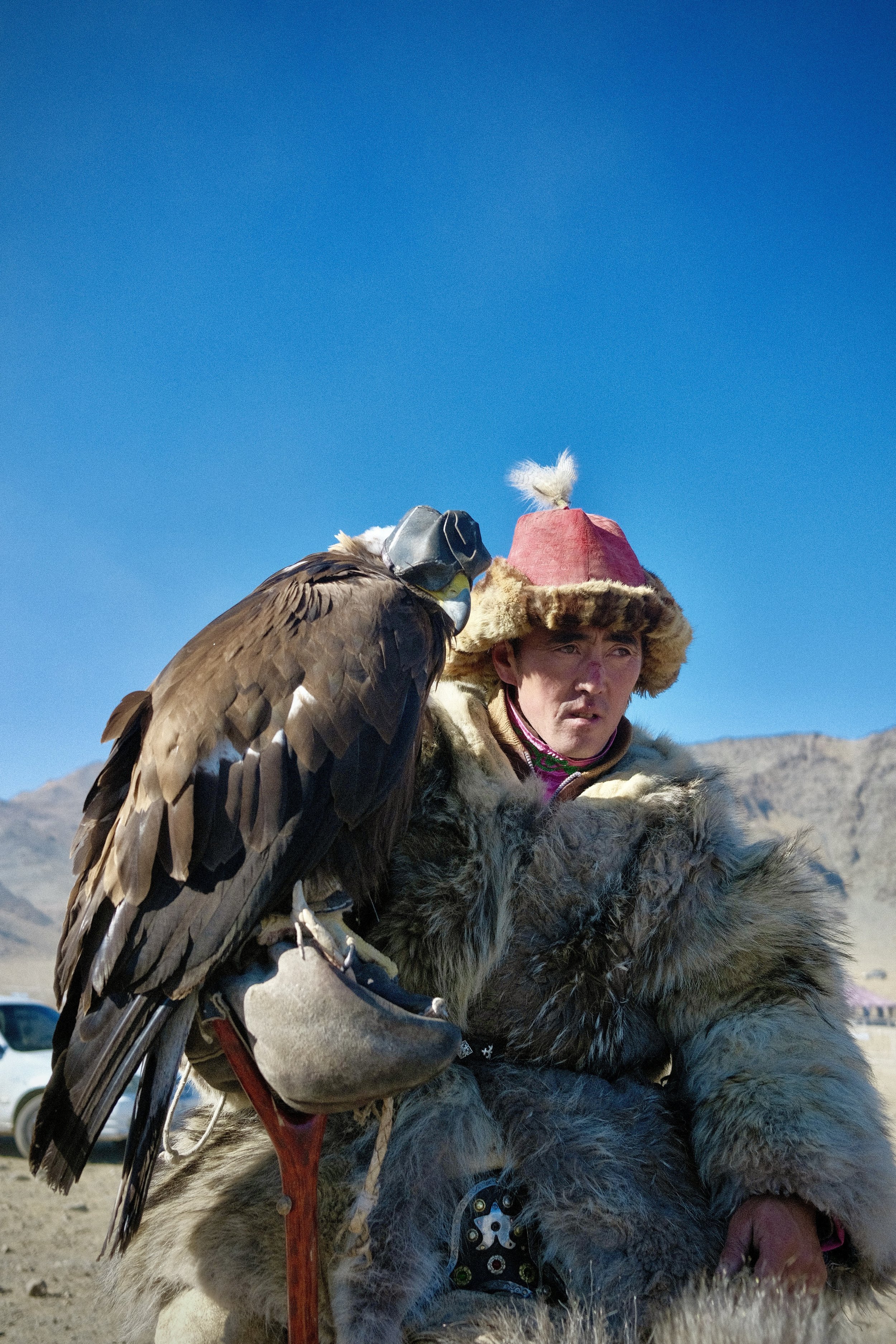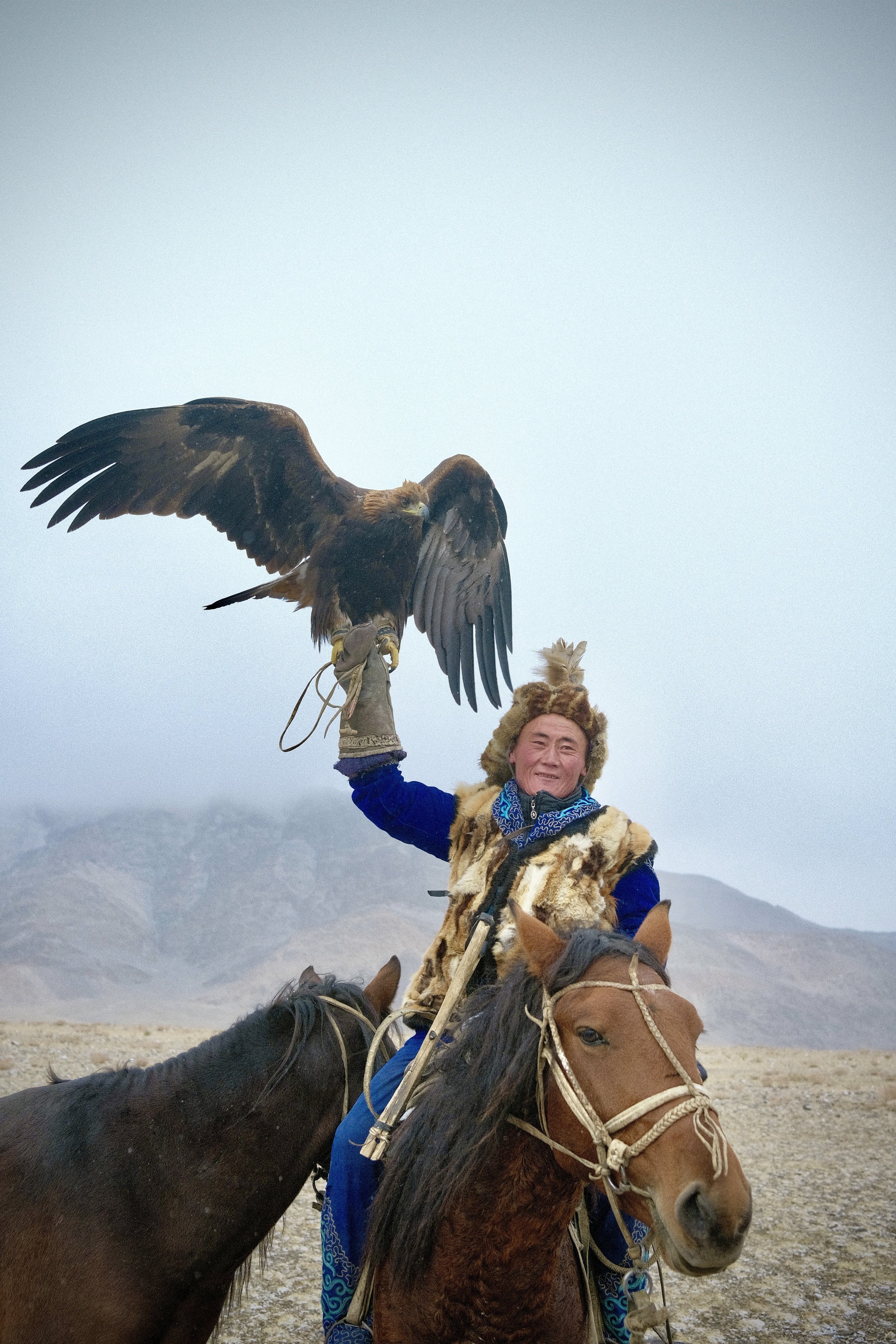Everything you need to know about The Legendary Kazakh Golden Eagle Hunting Festival!
Are the Eagles Golden? What do they hunt? What is so special about this festival? So many questions, but so little answers. To which, Beyond Expeditions will answer all of them in this guide to keep you up-to-date and knowledgeable about one of Mongolia’s prestigious festivals! Let’s break it down for you:
What is the Golden Eagle Hunting Festival?
The Golden Eagle Hunting Festival is a must-see event in Asia, particularly in Mongolia. It is a festival that happens once a year, where Eagle Hunters/Huntresses across the land gather to demonstrate the culture of the Kazakhs to the world, preserve their ancient legacy, promote their heritage to their next generations and ultimately, demonstrate the skills of both the bird and trainer.
When does the festival occur in Mongolia?
There are actually 3 different Golden Eagle Hunting Festivals.
The main festival is held in the first week of October and is organized by the Mongolian Eagle Hunters’ Association which attracts a large number of tourists and photographers. The October Festival also sees a huge number of Eagle Hunters/Huntresses, with up to 80 Eagle Hunters contesting for the ultimate cash prize and trophy. The other 2 festivals which occur in September, are smaller scale, with up to 40 Eagle Hunters/Huntresses contesting in each festival.
The main festival that falls in October is very popular amongst tourists all across the world, and even the locals. Some of them even arrive by foot from local towns.
Why is it called the Golden Eagle Hunting Festival?
Of the 60 species of Eagles around the world, the Golden Eagle is the most beautiful and most widely distributed species of eagle. Therefore, the specific species of Golden Eagle has been trained and used for hunting over hundreds of years in Mongolia and neighbouring countries such as Kazakhstan and Kyrgyzstan.
How did it started?
The tradition of hunting prey with an Eagle has been practised all over central Asia since the Bronze Age (2500 BC), especially in the Kazakh tradition. Over time, the tradition has been passed on from generation to generation where fathers pass on their knowledge to their sons to carry on their legacy. As mentioned in our article, Bayan-Ölgii, The Gates to Kazakh Mongolia, the western province of Bayan-Ölgii is concentrated with Kazakhs where the birthplace of the Eagle Festival originated from.
Where is the festival being held at?
The very first festival was held in 1999 in Olgii town in Western Mongolia. Over the years, the annual event continues to take place just outside of the Bayan-Ölgii Province and would take less than an hour by car if you are staying in one of the tourist camps in town. As your Russian Minivan approaches the vast desert, you could see hundreds of vans parked, thousands of tourists setting up their portable chairs and huge bazooka-sized lenses attached to cameras just to get a glimpse of the eye-catching Eagle Hunters. Set with the glorious backdrop of the Altain Mountain Range, it is the perfect opportunity for photographers and tourists to capture jaw-dropping photos of the Hunters/Huntresses. They are more than happy to pose for photos, proudly showing the bond between men/women and eagles. It is truly a spectacle!
How long is the festival?
The festival is a 2 full-day event with many different competitions, ranging from Kukbar - a goatskin Tug-Of-War, Kiz Kuar - a men and women whipping game, camel racing, to mini carnival games and the main event itself, The Golden Eagle Hunting competition.
How are the Eagle Hunters/Huntresses being judged during the competition?
On the first day, Eagle Hunters/Huntresses and their Eagles are judged on their speed and agility when they are released from the top of the cliff. The Hunter/Huntress partner will release the eagle and they have to swoop down and land on the arms of their owner below within a certain time frame. The owners will draw their eagle out with specific call signs that are only familiar to their own eagle.
Points will be awarded accordingly depending on where the eagle lands. While the eagle locates his owner from above, the Eagle Hunter/Huntress alongside his/her trusty steed will circle in an open field below calling out for their eagle to land in the different score zones. So what are these score zones? They are circles of the same size but located at different distances. The further the circle is away from the cliff, the higher the points scored.
For instance, if an Eagle Hunter/Huntress stays within the 10 point circle and his/her eagle lands on their arm successfully, they get 10 points. The nearest circle to the cliff is worth 6 points and the furthest is 10. It is a true test of communication, skill and chemistry between the eagle and the hunter. They definitely do not want their eagle to be flying away from the score zone and not listening to your command. For those that have successfully landed on their owner’s arm, I promise you, you’ll be struck in awe - such poise and control, years of training has led to this moment. And as such, Huge rounds of applause can be heard in the field!
Those that have proven their skill and speed on the first day will go through another round of competitions to test who is the best among them. However, this time round, instead of landing on their owner’s arm, they have to successfully land on their prey or bait that is attached to a rope which is held by the Eagle Hunter. The bait that is held by the Eagle Hunter is usually the skin of a dead fox or rabbit. The rules remain the same, and may the best Eagle Hunter/Huntress win!
Aside from being judged by the skills of both the Eagle and Eagle Hunter/Huntress and the Eagle’s speed and agility, they will also be judged based on their sophisticated yet elegant attire and horsemanship. Only then, will you find out the overall champion for the Golden Eagle Hunting Festival! For the eagle hunters that have travelled miles for such a prestigious occasion, there are awards and prize money to be won too. Awards are given out for Best Kazakh Traditional Attire, Best Groomed Eagle and Owner, Best Eagle at Hunting Prey, and Best Eagle at Locating its Owner from a Distance will be bestowed.
At the end of the festival, it is not just about competing but a true show of sportsmanship and brotherhood as Eagle Hunters from different regions rekindle with long lost friends and catch up with one another.
Aside from the Golden Eagle Hunting competition, what can tourists expect?
The festival starts with an opening ceremony - A parade of well-dressed 70 to 80 Eagle Hunters riding the horses, waving their national flags high and holding their eagles on their right arm. Many of the Eagle hunters arrive from faraway lands travelling with their eagles on horseback.
The festival has developed over the years to be more than just a competition amongst Eagle Hunters. Even before the celebrities for the two day festival arrive for the ceremony, locals set up mats and tables to sell their wares in a makeshift market: handmade felt shoes, embroidered vests, handmade paintings, musical instruments, tapestries, carpets and fur hats and gloves to keep you warm if you came underprepared for the cold weather in October! Keep a lookout for unique trinkets such as Owl or Eagle wings, feet or bones that have been preserved. If you’re fortunate enough, you’d see a pair of preserved camel feet that have been recycled into boots.


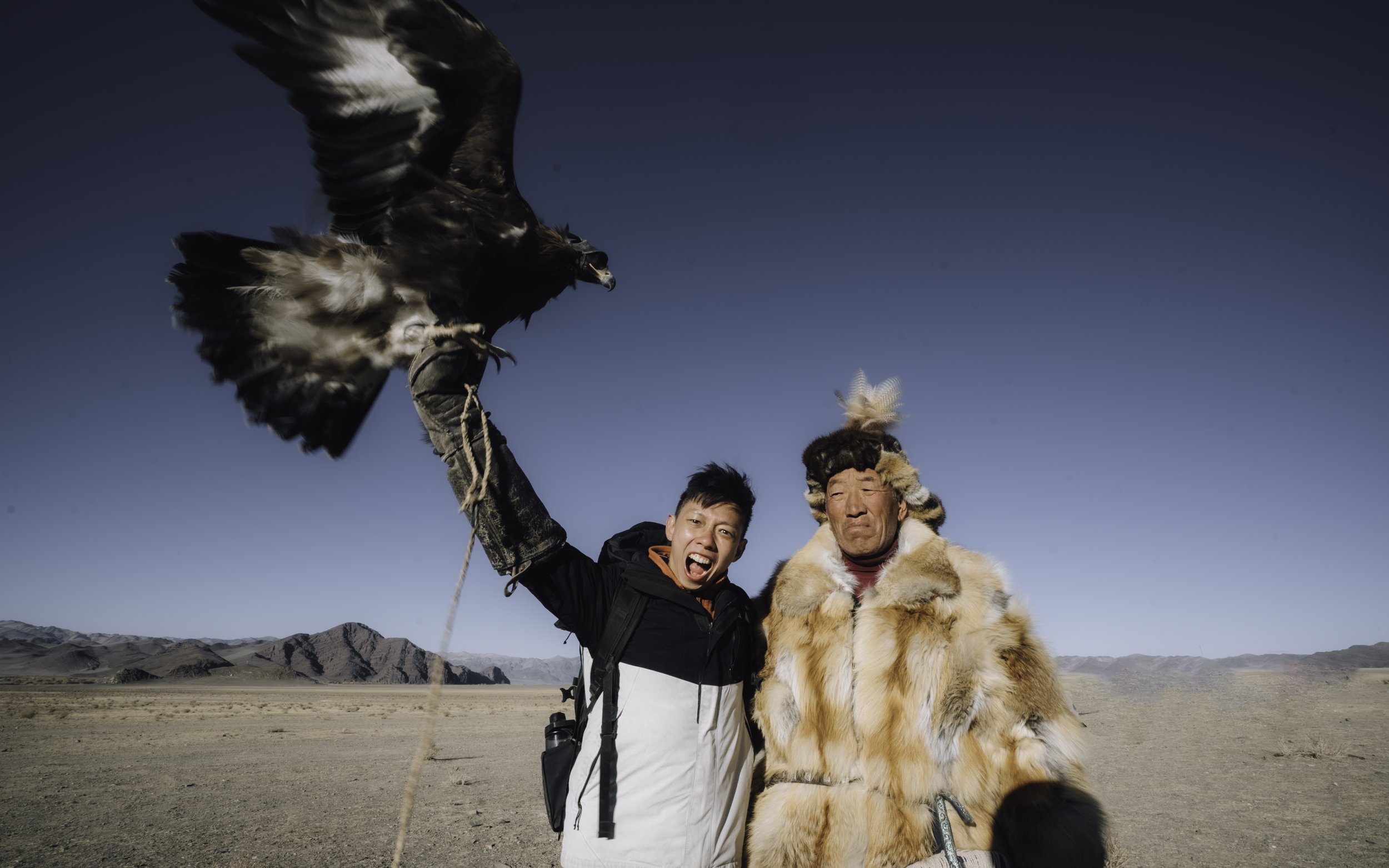
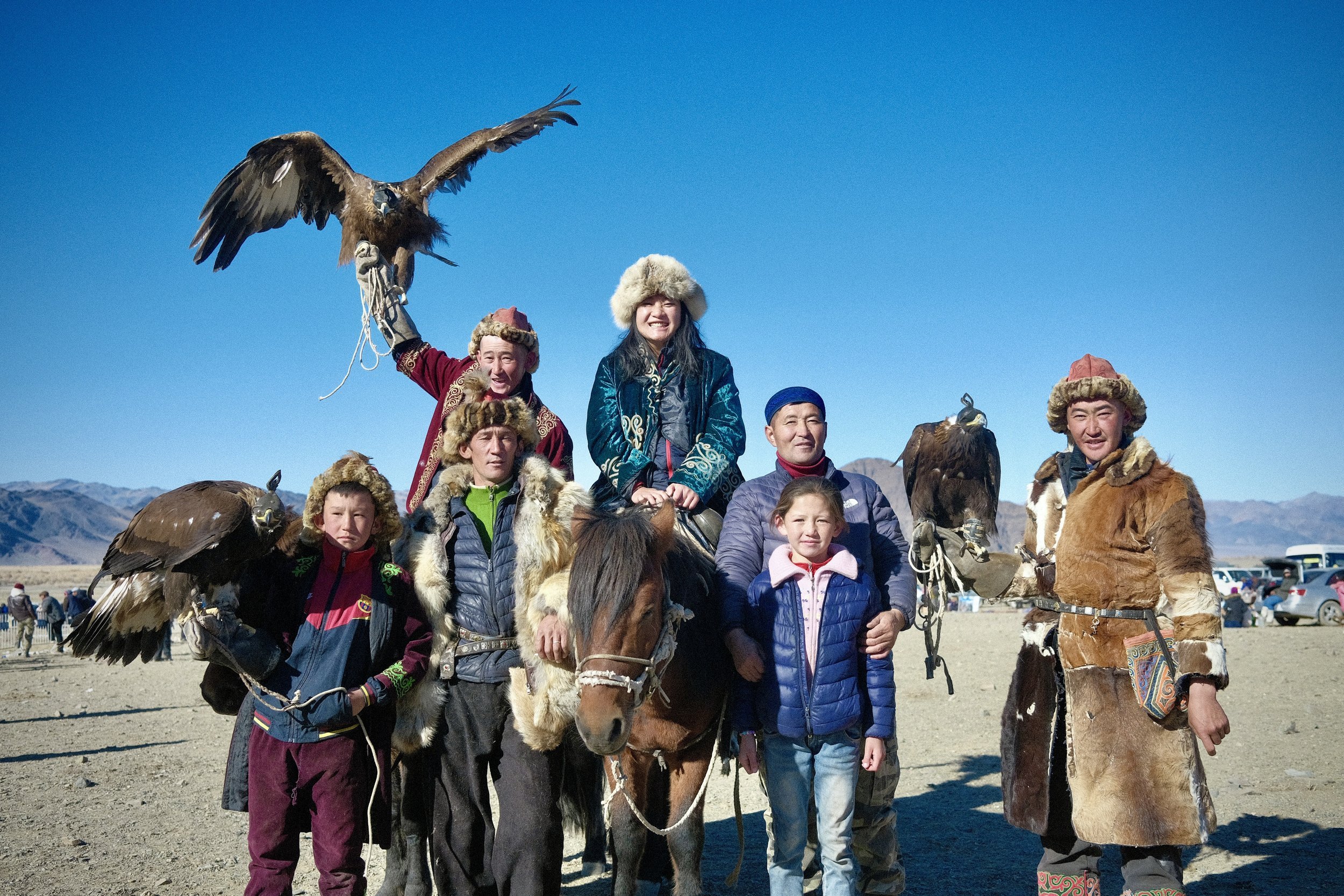
After you’re done with your own shopping, see the sights around the festival. There is a ton to see, ranging from classic carnival games such as ring toss, pop the balloon and even traditional Mongolian and Kazakh costumes that you can rent out for the day (it will be pricier than the carnival games). However, it is worth every penny if you are planning to look like a local and have your own photoshoot. Get on one of the many horses you’ll see and hold onto an Eagle on one arm, you’ll live the dream of becoming an Eagle Hunter/Huntress yourself.
The fun continues after lunch on both days right after the officials conclude the Golden Eagle Hunting competition. You will see locals coming into the open field to prepare for traditional Kazakh and Mongolian cultural competitions. At one end, you’ll see archers in beautiful deels participating in Mongolian archery. With their blunt arrows, they have to aim for the targets that are marked on the ground. You could hear the friendly trash talk amongst the participants to taunt one another. The tourists loved every bit of it, with their eyes glued from one direction to another just to see the arrows fly.
Running around from one location to another to watch the different competitions can be rather tiring for tourists and locals. It feels as though you’re competing in the Golden Eagle Hunting Festival too! What better way to keep you fueled up for the day than to grab some festival food. There are aplenty! Most tourists visiting the festival will have meals provided by their tour groups, but if you’re a true foodie, you want to indulge in the local flavours too. Dig in and try their deep-fried mutton pastry, also known as Khuushuur, it is one of the main festival foods. Another common food you will be able to buy is Shish, marinated mutton or goat that is cooked on a skewer. For those that are willing to spend a little bit more, there are a few cafes set up in tents that serve coffee, soups and dishes like rice or noodles.
Right before the sun sets, the Bactrian Camels decide to make an appearance. Are the Eagle Hunters going on camelback with their eagles? That will be a sight to see. Unfortunately, that is not the case but you’ll get to witness camels racing. Such calm, relaxed creatures going at top speed against one another? You do not want to miss that.
We all know The Golden Eagle Hunting Festival is a celebrated event in Bayan-Ölgii, and what better way to end the first day of festivities with a Kazakh Cultural Concert at the National Theatre. You’ll see loads of familiar faces here, as everyone rushes down to conclude Day One.
On Day Two of the festival, you’ll be introduced to more traditional Kazakh competitions. Up first, Kiz Kuar, a tradition of the past where women and men get on horseback, and the woman has to chase the men down and whips him. Sounds violent and painful? In fact, the ladies find it rewarding. The practice is if a woman successfully whips her man, she gets to go on a date with him. However, that is a thing of the past. Today, it is a healthy competition to witness both women and men fighting it out to see if the men can outrun the lady.
Before the festival comes to an end, the penultimate event to close off the series of mini competitions is a game of Tug of War. This is not the Tug-Of-War we all have come to know, in fact it is called Kukbar. A goatskin tug-of-war between two contestants charging to the middle while on horseback to wrestle for the ultimate prize - the goatskin. This is stuff you’d never experience back home!
The prestigious festival ends with a closing ceremony where the judges and officials will call out the respective winners after a long day of tabulating the results!
Are there any Eagle Huntresses?
Well, this is interesting! In fact, in recent years there has been a rise in the number of Eagle Huntresses participating in this elusive festival. Let’s backtrack to the beginning! It all started in 2016, when a documentary called The Eagle Huntress was released to draw people’s attention to Mongolia. The documentary tells the story of Aisholpan, a rosy-cheeked 13 year old girl who defied gender conventions to practise the ancient Mongolia-Kazakh tradition of eagle hunting. Not only did she practice the tradition, she went to win the entire competition as well. Talk about being an inspiration! And indeed she was. Due to her success and breaking gender norms, you’d see more and more young Eagle Huntresses showing their prowess at the festival too.
Do the Eagle Hunters raise the eagle? And what happens to the eagles after years of training?
Hunters catch eaglets or young eagles from the eagle nest which is located high on the mountains. Hunters start feeding the eagle with their hand after returning home and slowly build and learn to gain their trust. The Hunters will train them to live without their mother and learn to live and hunt with people. Only females are taken, as they are larger, more powerful and aggressive than the males - with a bigger wingspan and weighing up to 7 kilograms when fully grown.
In West Mongolia tradition, eagle hunters will hold a ceremony to release their birds back into the wild after 8 - 10 years of being with them. The eagles will then roam free to live for another two decades as their maximum lifespan is between 20 - 30 years. It may not be the easiest thing to do for the Hunters, as the pair have been together for so long, and some find it hard to let go, in fear of other hunters that will catch or kill the vulnerable bird.
Got everything down on your phone? That was a whole lot of information for you to digest, but I’m pretty sure you can consider yourself as an Eagle Hunter/Huntress now too. You’re almost set, the only thing left that you gotta do is booking those tickets to Bayan-Ölgii. If you have any other burning questions, feel free to ask your tour guide during the trip, they will be more than pleased to share everything under the sun about the festival. Now, what are you waiting for? Don’t you hear that? The eagles are calling! Sign up for The Legendary Kazakh Golden Eagle Hunting Festival 2023 with Beyond Expeditions today.
Article Written By: Dzul
Beyond Expeditions’ Adventure Content Writer since June 2022 and pursuing his Communications Degree in Singapore University of Social Science. He hopes to continue his knack for travel writing, sharing stories in hopes of inspiring the travel bug in his readers. He dabbles in photography on the sides and wants to incorporate beautiful visuals in his storytelling. A true fan of the outdoors, his thirst for adventure is second to none!
